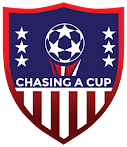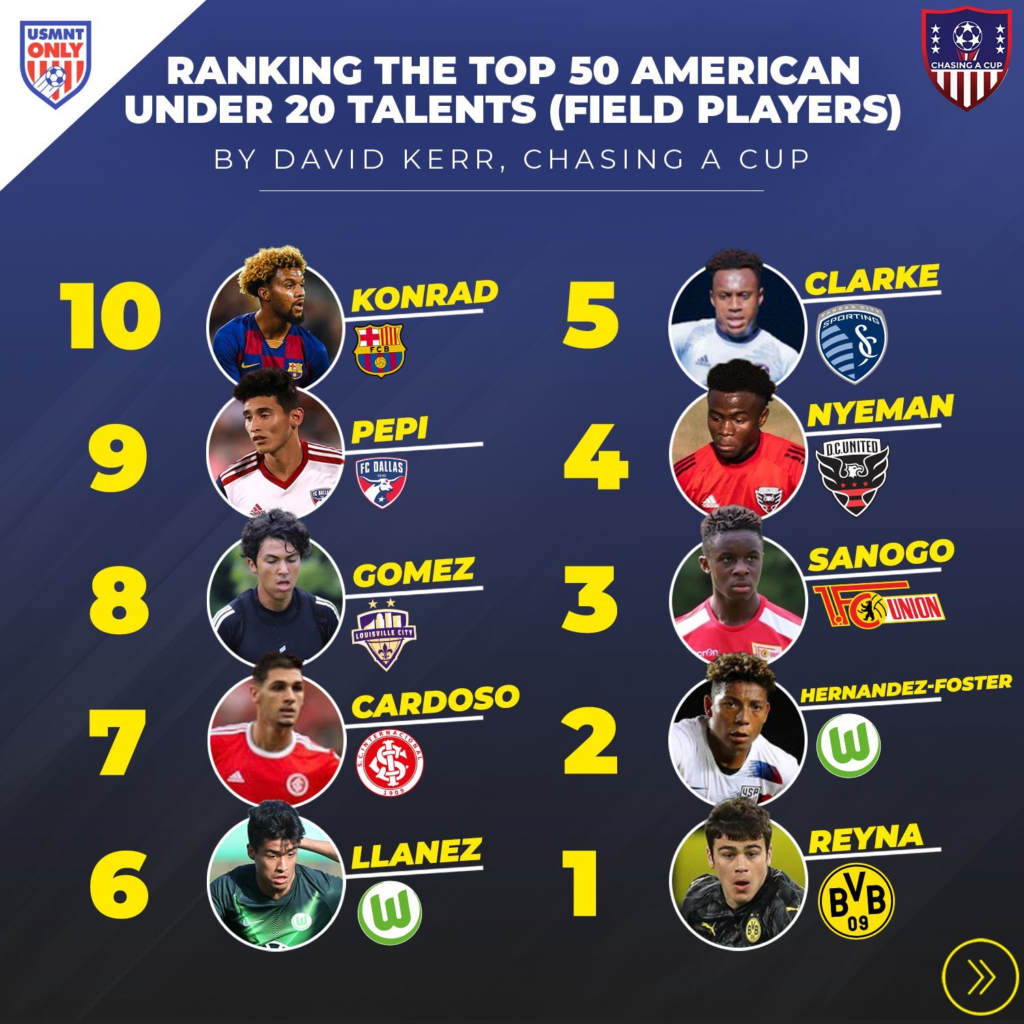

USMNT
Generation Adidas U17 Report
Published
4 years agoon
I did it for you all. I watched every broadcasted U17 match that featured an American MLS team. That means I was able to watch these clubs, some multiple times: Atlanta, LAFC, NYCFC, Seattle, Minnesota, LA Galaxy, NYRB, San Jose, Philadelphia, Columbus, Austin, Charlotte, Cincinnati, DC United, Miami, Houston and Real Salt Lake.
The following clubs did not get a broadcast at the U17 level: New England, Dallas, Orlando, KC, Portland, St. Louis, Colorado, Nashville or Chicago.
The U17 level consists of players born in 2005, 2006 and there were numerous players born in 2007 that were playing up a level. The 2005 age group has been a bit of a forgotten one from a Youth National Team (YNT) perspective, though the USSF just announced the hiring of Marko Mitrovic to lead the U19 group, which will focus on the 2005 age group. The reason they have been a bit of an afterthought is because the 2023 U20 World Cup will mostly feature 2003s and 2004s and the 2023 U17 World Cup will feature 2006s and 2007s.
Scouting players at this level is challenging. It can be messy. I rate players based on three categories: physical ability (strength, speed, quickness, explosiveness), technical ability (touch, dribbling, passing, shooting, tackling) and tactical/intellectual ability (creativity, mental processing, toughness).
At this age, I am looking for peaks and am not necessarily too concerned about valleys. I am looking for elite traits, even if they show up inconsistently. Obviously the players that do it more consistently get noted, but the key at this level is identify what a player could be and hope that through development, physical and mental maturation, and luck; the consistency will come and the areas of weakness can become strengths.
I’ve gone position by position to identify players that caught my eye:
Goalkeepers
Emmy Ochoa, San Jose Earthquakes (2005)
Emmy Ochoa is a Mexican-American that has played for Mexico at the U18 level, but is eligible to play for the US and is a likely target for the 2005 group. He signed as a homegrown player with San Jose as a 14 year old and currently starts for Earthquake II in MLS Next Pro. He’s the best 2005 US-eligible keeper that I have scouted. What stood out to me in the match I watched Emmy play vs River Plate was his ability with the ball at his feet and his intensity.
Jonathan Munteanu, Houston Dynamo (2005)
Jonathan has not played as a Youth International and is not on a pro contract, nor has he played for Dynamo 2. Jonathan caught my eye because of the explosiveness and demanding presence he showed between the pipes.
Left-Backs
Brian Alanis, Houston Dynamo (2006)
Brian Alanis is a youth international that has most recently joined a U17 camp in January. I liked Brian’s ability to maneuver in tight spaces and he has a really nice touch. He showed the ability to both initiate positive transitions and get on the end of transitional play by flying up the left sideline.
Christian McFarlane, NYCFC (2007)
Christian was one of the few standout 2007s playing up a level. He is a British-American that signed a homegrown contract with NYCFC as a 14 year old, but has not yet featured for NYCFC or NYCFC II in MLS Next Pro, though I’d expect that to happen at some point this year. Christian is big for his age, already standing at 6-0 tall. That also makes him bigger than you typically see at the full-back position, but I really like him out there. He’s really smooth on the ball and does a really nice job with his first touch. He showed a good ability to progress the ball forward and place passes right where they needed to be.
Right-Backs
Oscar Verhoeven, San Jose Earthquakes (2006)
Oscar is one of my favorite youth players to watch because he is so creative with the ball at his feet. Oscar has been called to the last couple U17 YNT camps and I expect him to be a fixture in that team. He has not signed a professional contract and has not played for Earthquakes II, but I think he will at some point this year. I saw more of what I had seen from Oscar, lightning quick feet, highly creative and good long passing and crosses. His defenses isn’t quite at the level of his offense, but he puts in a shift and he’s plenty fine physically at this level.
Izzy Boatwright, Inter Miami (2005)
Izzy played both Center-back and Right-back for Inter Miami, but played more so at RB, so I am placing him here. How Izzy develops physically will likely determine where he ends up. I first saw him play CB and loved his quickness and skill on the ball and as a passer. When I saw him play RB I was very intrigued, because he is a bigger guy. He showed even more creativity on the ball and was a monster in 1v1 defense. He was an absolute lock down 1v1 defender against the eventual championship side, Seattle.
Izzy Boatwright (2005) is a player that has caught my eye. He played really well at CB in group play and then played RB in the round of 16. He's got CB size and CBs don't usually do things like this. pic.twitter.com/qya1WafiOs
— Marcus Chairez (@chai_asc) April 14, 2022
Diego Rossi, NYCFC (2005)
Diego was recently called into the U19 camp and has appeared for NYCFC II. I was impressed with Diego’s quick feet, pace and ability to connect play up the right side.
Center-Backs
Francis Westfield, Philadelphia Union (2005)
Francis has appeared in two matches for Union II, starting one. He, like Izzy Boatwright, plays both RB and CB. He played RCB in a back three in the match I saw against Flamengo, maybe one of the most impressive performances I saw by a MLS academy team against a giant like Flamengo. Westfield showed an incredible feel for the game, he was intercepting everything. He isn’t the tallest CB, but he moves well and is plenty comfortable with the ball at his feet, but for sure his most impressive trait was the way he reads the game and disrupts the opponent’s attack.
Ángel Martínez, Seattle Sounders (2005)
Ángel has played for the USYNT at the U15 level. Ángel might not be the most physically gifted CB in this age group, but he is so smart and reads the game so well. He and Stuart Hawkins were the most solid CB pairing I saw and was a big reason why Seattle one the U17 cup. Ángel showed some good long balls and good ability to dribble out of trouble, but his mental processing was what really stood out to me.
Tyler Hall, Inter Miami (2006)
I only saw Tyler for a half, but you only need to see Tyler play a little to see that he is special. Tyler captained the USYNT U17s in the last camp and he has been a starter for Inter Miami II. I think it is only a matter of time before Tyler gets a homegrown deal with Miami. He’s clearly very well thought of within that organization and within the USSF. He has all the makings of an elite CB prospect, especially if he hits a little bit of growth spurt. He’s extremely mobile, physical, smart and is very comfortable with the ball at his feet. Unfortunately Tyler got a knock and missed the quarter-finals and semi-finals. I thought Miami really missed his presence in the backline and was a big reason they did not go through to the finals. Hopefully he gets fit soon and can get back on the field for Inter Miami II. Tyler is one of the best 2006 prospects I’ve scouted in the USYNT pool.
Matai Akinmboni, DC United (2006)
Matai is a tall, left-footed Center-back that has played for DC United’s USL side, Loudoun United. He and Jace Clark are two highly regarded CBs within the DC program at the U17 level. These two had the tough task of taking on a high powered River Plate side in VERY windy conditions. It wasn’t a standout game from Matai, but there were enough flashes of his ability as a ball playing CB, and his ambition to break lines with his passes, to get me excited. Tyler and Matai would make a very exciting CB pairing at the U17 level.
Defensive-Mids
Ethan Kohler, San Jose Earthquakes (2005)
You can’t miss Ethan on the pitch because he rocks the short shorts. Ethan has not played at the youth international level and is not on any sort of pro contract, but he did make his debut with Earthquakes II last weekend, starting at RCB. Ethan caught my eye at the GA Cup because he covers a lot of ground and is fearless going into tackles and challenges. He showed a lot of leadership qualities on the pitch and was also solid in possession and distribution.
Bryan Moyada, LAFC (2005)
Bryan is more of a deep lying, playmaking 6 in the mold of a Danny Leyva. I watched LAFC U17 play Flamengo in a match where LAFC looked a bit over matched, however Flamengo struggled to put together any big time chances and I think that was in large part because of Bryan’s pitch control and his ability to minimize momentum through craft possession and passing.
Center-Mids
Niko Tsakiris, San Jose Earthquakes (2005)
Niko signed his homegrown contract with San Jose earlier this year and has been getting some minutes with the first team and he’s looked good. Niko has the looks of being one of the top 2005s in the USYNT pool and with more success in the MLS, he could start getting looks with the U20s, otherwise he will be a staple with the 2005 group. Niko was very strong against River, showing good body control and an ability to progress the ball into the final third. He was a menace all match and looked exactly how you’d want a professional to look in a youth tournament.
Benjamin Cremaschi, Inter Miami (2005)
Cremaschi is an Argentinian-American who signed with the Miami academy recently from Weston. Benjamin actually first caught my eye in a MLS Next Pro match against Philly where he scored a nice header goal against McGlynn and Paxten. He played really well all tournament as both an 8 and a 6. He’s physically advanced and plays very strong and aggressive. He reads the game well and breaks up a lot of plays defensively. He is also a good ball progressor and connects well with wings and strikers. He’s definitely one to keep an eye on. I think his future is as a 6.
Daniel Ordonez, Austin FC (2005)
Daniel is a super smart and crafty midfielder. He’s tidy with the ball at his feet and he reads the game super well. He showed many different ways to progress the ball and help get the ball in dangerous positions.
Brandon Tellez, LA Galaxy (2005)
I thought Brandon played really well against a very good Manchester United side. He was dangerous in attack, creative with the dribble and had very good ideas in getting out of tight situations. He was one of the bright players in a match where LAG went toe to toe with one of the best academies in the world.
Caleb Borneo, Columbus Crew (2005)
Caleb has not signed a homegrown contract nor has he played internationally, but he has made the bench for Crew 2 and his debut should be around the corner. I really loved Caleb’s versatility in the match I watched. In the first half he played more as a playmaking 6 and in the second half he played more as an attacking 10 and he was effective at both.
Nate Worth, NYRB (2007)
Nate is one of the four 2007s on this list. He has not signed a homegrown contract, but he is on loan to NYRB II in the USL and he has been with the USYNT U15s. It’s rumored that Nate is the best free kick taker in the USYNT pool, but we didn’t get to see too much of it. He did score a goal in the match I saw on a bit of a broken play. He looked a little bit overmatched physically, he’s not the biggest kid, but overall I thought he showed toughness and hung in well for someone playing up a level.
Attacking-Mids
Cruz Medina, San Jose Earthquakes (2006)
Cruz is a premier 2006 player in the USYNT pool. He has not yet signed a homegrown contract, but he has trained with clubs like Bayern Munich. I expect the homegrown deal to happen this year and I also expect him to play with Earthquakes II at some point soon. He has been a consistent call up to the USYNT U17s. Cruz has more of a 10 profile, but plays the 8 for SJ and USMNT. In San Jose’s match against River, I saw more of what I have seen from Cruz. He’s got a rare and special ability with the ball at his feet. He’s so creative in tight spaces and has some sneaky acceleration to get by people. He’s not the biggest or fastest, but his technical ability is remarkable.
Christopher Aquino, Seattle Sounders (2006)
Mr. Aquino was one of the stars of the tournament and the championship team’s best attacking player. He came off the bench in the three matches I watched and played a false 9 type of role. He scored a goal in both the semi-finals and the finals. The goal in the finals was from about 25 to 30 yards out. He has a smooth left foot and is crafty in creating space in tight areas. Just when you thought the 2006 USYNT midfield couldn’t get anymore stacked, now you can throw Aquino in the mix.
Wingers
Álex Alcalá, LA Galaxy (2005)
Álex is on LA Galaxy II, but has not yet played for the USL side. He is eligible to play for the US and Mexico. He’s undersized, but boy did he put on a show in the round of 16 against Manchester United. He nutmegged the MU left-back four or five times. His dribbling and creative problem solving in tight spaces was a joy to watch.
#LAGalaxy U-17 academy player Alex Alcala (@AlexAlcala_05) showing off some skill at the Generation Adidas Cup. pic.twitter.com/p5cgtGiJWP
— Galaxy Fan Talk (@LAGalaxyFanTalk) April 14, 2022
Justin Knighton, LA Galaxy (2005)
Justin is a pacey, aggressive winger who was up for the challenge against Manchester United. He was relentless in running at defenders and created a lot of problems. He scored the first goal in that match and it was a nice one.
Andre Gitau, Houston Dynamo (2006)
Andre is another top 2006 and recently played with the USYNT U17s. Andre has a rare blend of athleticism and skill. He was a handful in the match I watched. He loves attacking players 1v1 and is able to have success with speed, power and skill.
Micah Burton, Austin FC (2006)
Micah recently played false 9 for the USYNT U17s, but he is better suited as a 10 or a winger. He’s undersized, but has a wonderful feel for the game and good technical ability. He scored on a very nice goal in the match I watched and was active all match long. I loved the different ways he got out of tight situations and he moved incredibly well without the ball.
Miles Perkovich, Inter Miami (2006)
The 2006 group has the looks of a historic one. Miles is another attacking player from that class that I am high on and he had some really nice moments in the GA Cup. He’s ambitious and creative with the dribble and loves to attack 1v1. I thought he held onto the ball a little too long in some instances and he wasn’t a major factor in the semi-final loss to Seattle, but there were tough circumstances in that match. Miles is more quick than fast and is very strong. I’d expect him to get a homegrown deal in the near future and also get a call from the USYNT.
Some thoughts on a couple Inter Miami U17s…
— Marcus Chairez (@chai_asc) April 14, 2022
Someone many of you follow for USYNT info tried to tell me that Miles Perkovich (2006) wasn't a YNT level player. I am not sure how you can have watched him play and think that. Not very many 15 year old wingers do stuff like this. pic.twitter.com/4VSmtdTGdV
Etienne Veillard, Seattle Sounders (2007)
Etienne is another 2007 that played up in this tournament. He scored the second goal for Seattle in the U17 finals. He’s a pacey and hard working winger that was a nuisance all tournament long
Strikers
Nelson Pierre, Philadelphia Union (2005)
I only saw Nelson for about 30 minutes vs Flamengo, but he was super impressive and an absolute load for the Brazilian side to handle. He has a rare blend of power and speed, reminiscent of Daryl Dike. He also had a goal that was Dike like with nice off ball movement and a killer finish from a tricky angle. Pierre is playing consistently with Union II and is a striker that the USMNT community should be excited about.
Bryan Destin, Inter Miami (2006)
Destin is a player I knew little about before the tournament, but I was left impressed. He scored a beautiful goal against River in a match where he had a brace. In that match he also showed some of the best hold up play you will see at this level. He knows how to use his strong frame to hold off defenders and keep the ball in a position that the defender cannot disrupt. From there he was effective in buying time for his teammates to enter the attack and find them in good positions. I’d love to see Destin with the USYNT U17s in the next camp. They need a target striker like Destin.
Diego Rodriguez, Austin FC (2006)
Diego isn’t typically a starter for Austin’s U17s, but with Cruz Mesa out with an injury, he saw a lot of minutes in this tournament. I was impressed with his skill on the ball and his ability to make plays for his teammates.
Axel Kei, Real Salt Lake (2007)
I didn’t see much of Axel in the match I watched, but his physical profile at his age is undeniable. He and Christian McFarlane are the only two 2007s on homegrown deals.
You may like
-
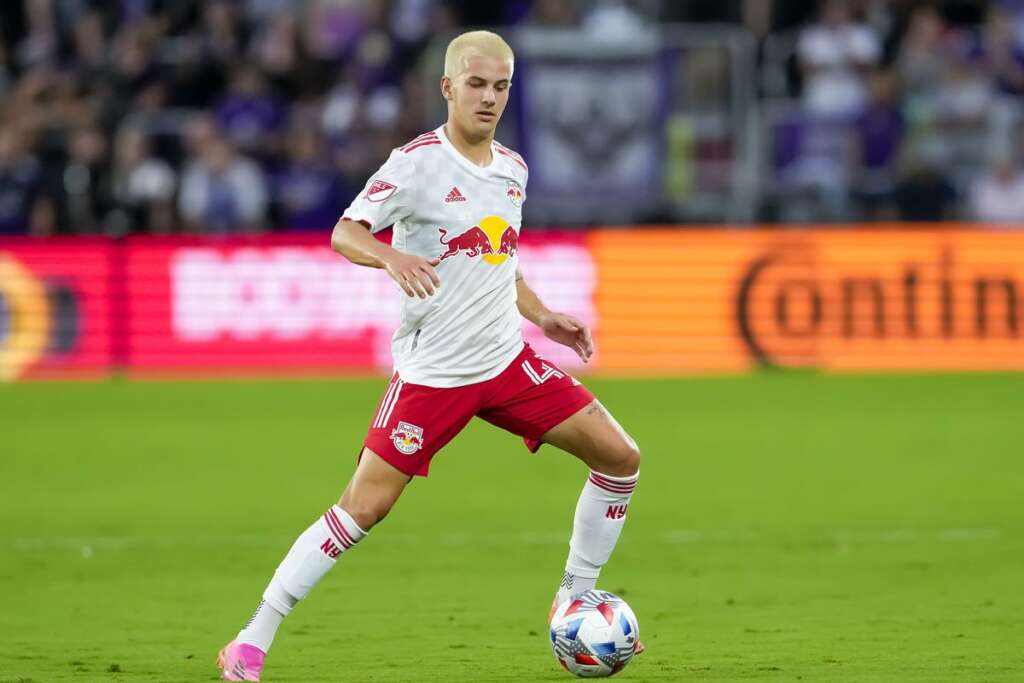

MLS 2022 — American U21 Impact Rankings — Season Wrap Up
-
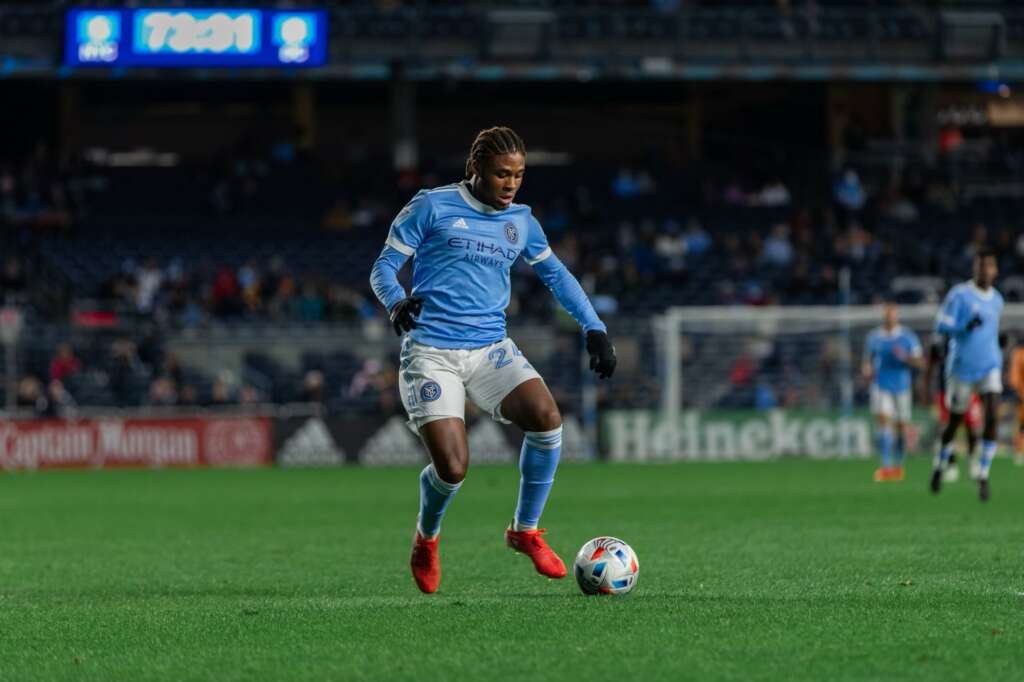

MLS 2022 — American U21 Impact Rankings — Version 15
-


Everything you need to know about the U.S. youth camps this September
-
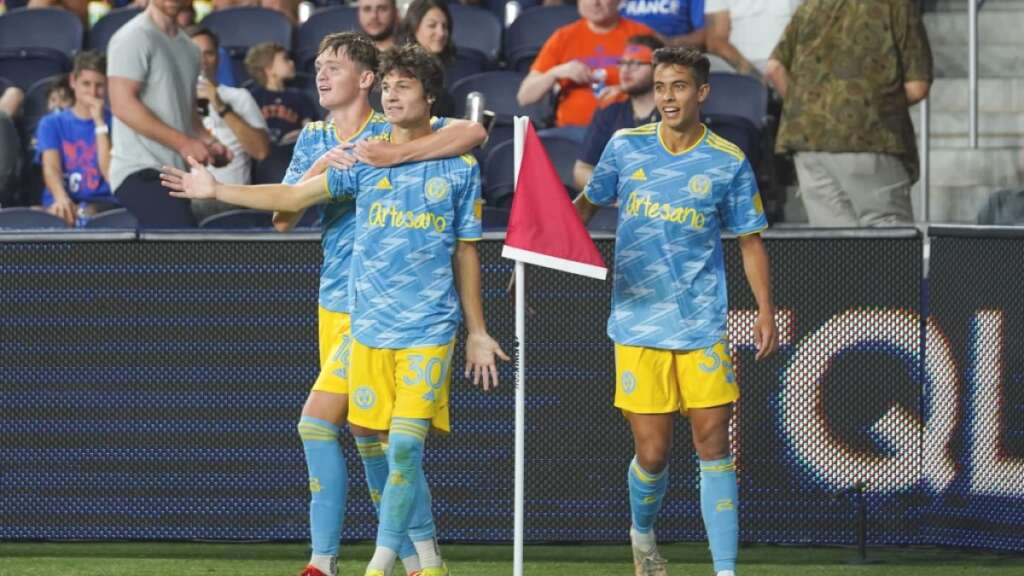

2022 Youth Series: MLS Club Youth Talent Rankings
-
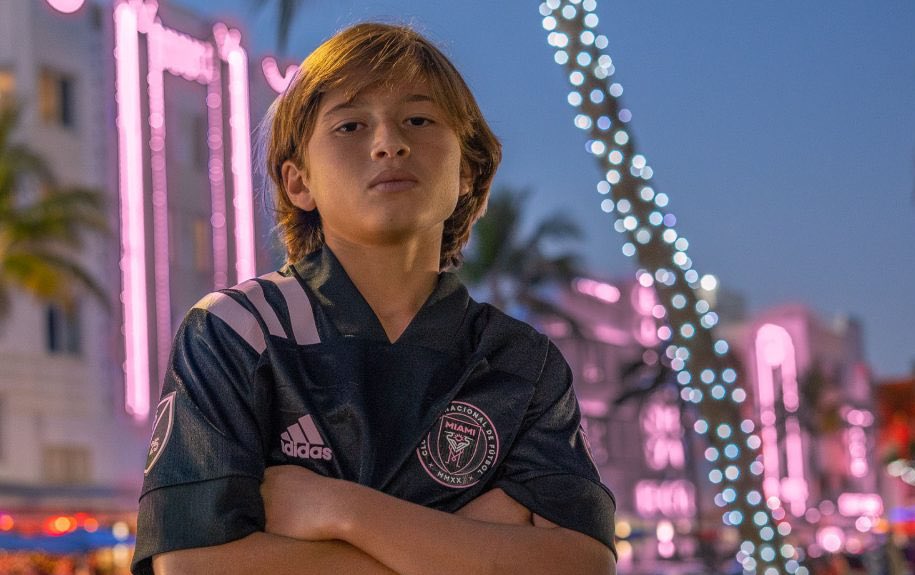

2022 Youth Series: Top 20 Born In 2007
-
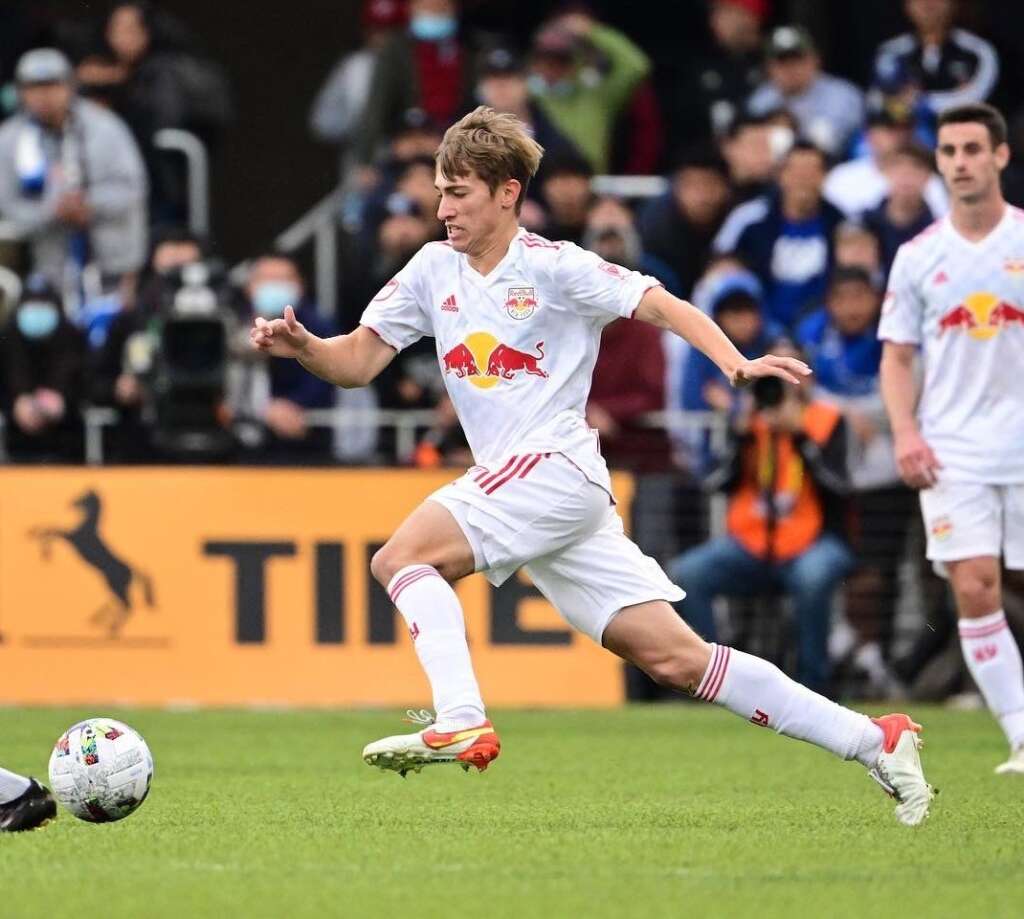

MLS 2022 — American U21 Impact Rankings — Version 14
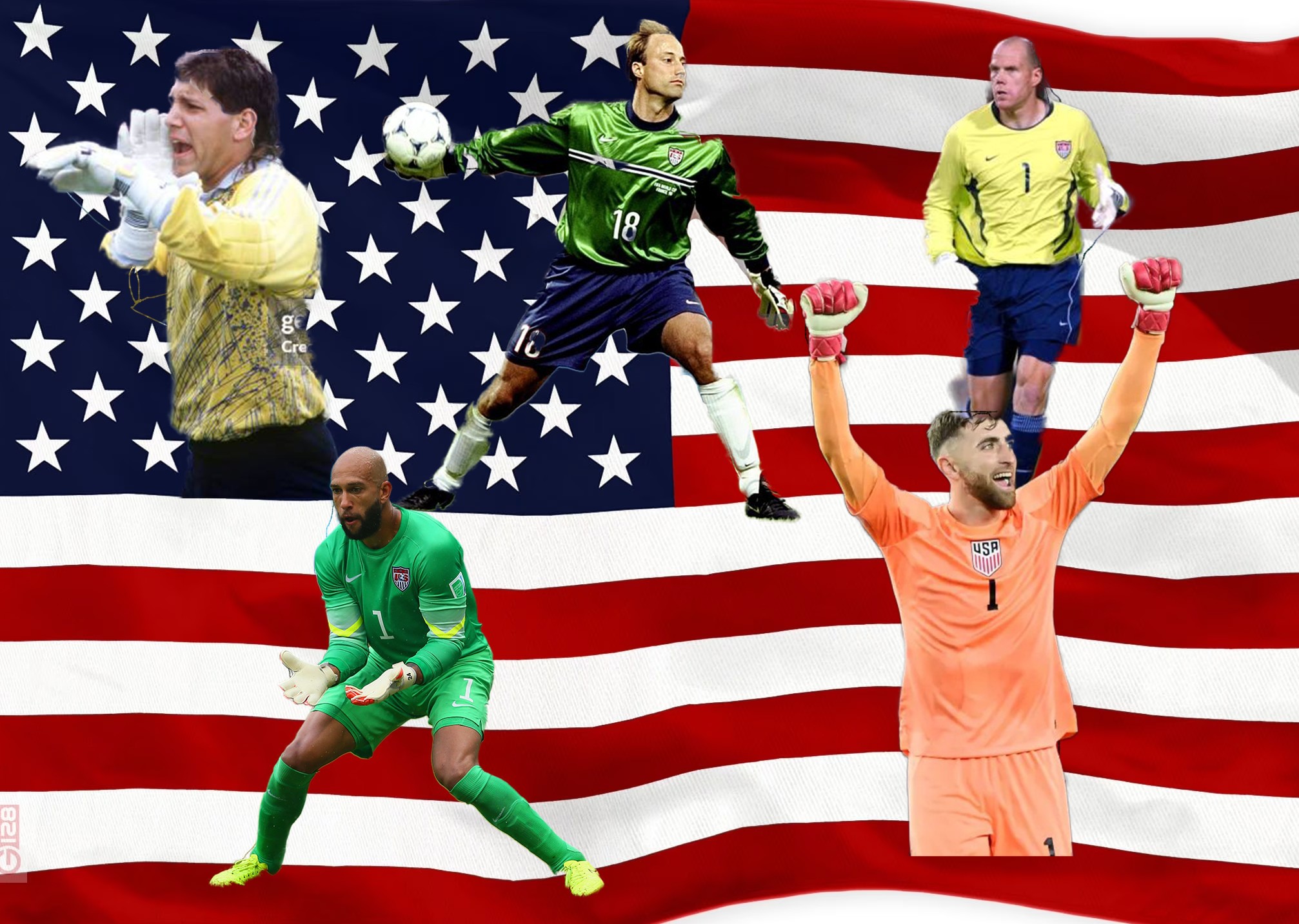
Thomas Deschaine (@uskeeper on X and us_keeper on Instagram)
With only the March window left before Mauricio Pochettino finalizes the 2026 World Cup roster, one major question remains: who can truly be trusted to guard the net? It’s a debate still dividing media, fans, and observers alike.
The USMNT has produced some legendary goalkeepers over the past four decades, but the current pool has yet to see anyone truly seize the No. 1 spot. For a while, it looked like Matt Turner might start in back-to-back World Cups, but after a poor summer performance against Switzerland, he lost his place to Matt Freese. Freese went on to start the last thirteen matches, yet outside of his heroics in the 2025 Gold Cup penalty shootout, echoing Turner’s run in 2023, Freese hasn’t fully convinced me he should be the starter at the 2026 FIFA World Cup.
Since the 1990 cycle, five USMNT goalkeepers, Tony Meola, Kasey Keller, Brad Friedel, Tim Howard, and Matt Turner, have earned the World Cup starting role. Each of them logged minutes in the grueling World Cup qualifying process before taking the job. But Matt Freese could become the first USMNT goalkeeper to start a World Cup without ever playing a single qualifier.
Tony Meola – 1990 Italy World Cup
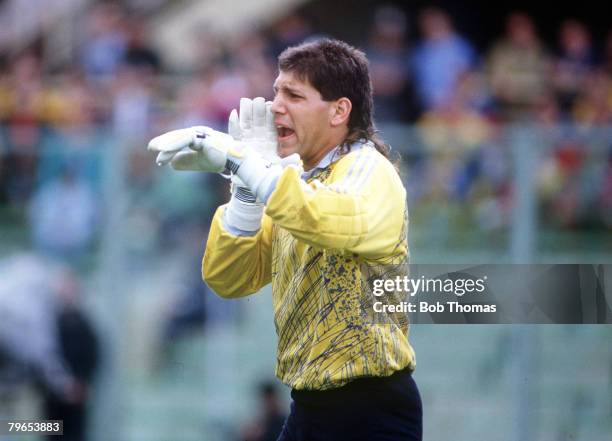
Creator: Bob Thomas | Credit: Getty Images
Tony Meola remains the youngest goalkeeper ever to start a World Cup for the USMNT. He went on to start in back-to-back tournaments and later served as the backup at the 2002 World Cup alongside Brad Friedel and Kasey Keller.
First Cap (Age) – June 7, 1998 (19 years, 3 month & 17 days)
World Cup 1990 (Age) – (21 years, 3 months, 10 days)
Overall Stats heading into the World Cup
Matches Played – 17
Matches Started – 15
Minutes Played – 1,395
Wins – 7
Shutouts – 6
World Cup Qualifying Stats
Matches Played – 4
Matches Started – 4
Minutes Played – 360
Wins – 2
Shutouts – 4
Kasey Keller – 1998 France World Cup
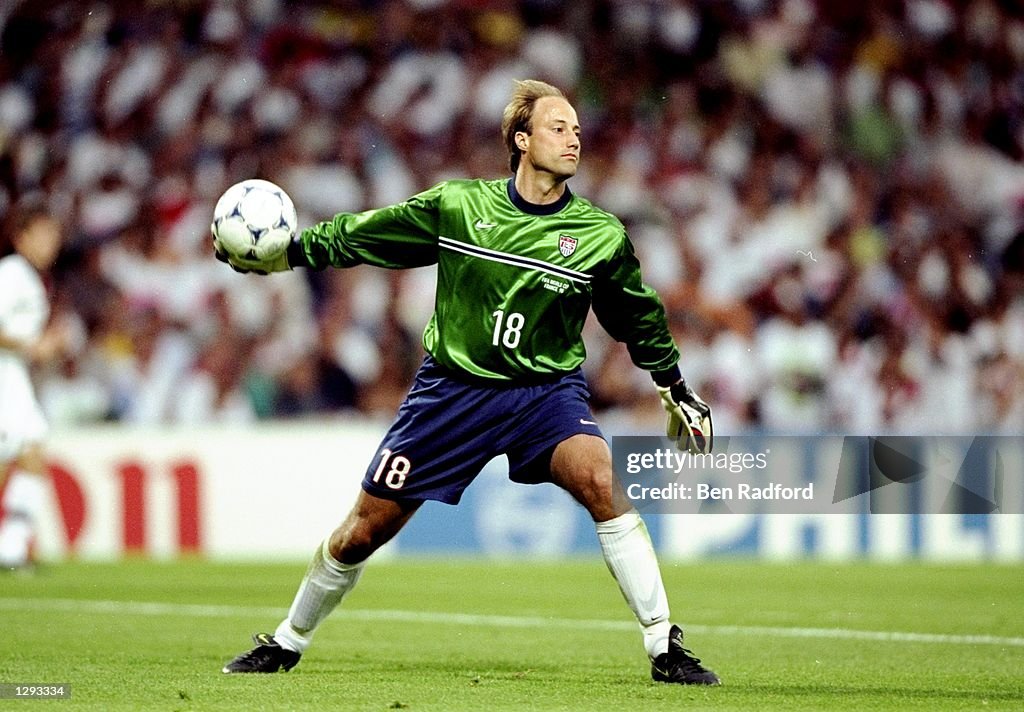
Kasey Keller, one of the backups to Tony Meola at the 1990 World Cup, was left off the 1994 roster but later reestablished himself in the USMNT picture. He went on to become the primary starter for the 1998 and 2006 World Cups and served as the backup on the 2002 team.
Creator: Ben Radford | Credit: Getty Images
First Cap (Age) – February 4, 1990 (20 years, 2 months & 6 days)
World Cup 1998 (Age) – (28 years, 6 months, 15 days)
Overall Stats heading into the World Cup
Matches Played – 34
Matches Started – 33
Minutes Played – 2,790
Wins – 18
Shutouts – 16
World Cup Qualifying Stats
Matches Played – 9
Matches Started – 9
Minutes Played – 810
Wins – 5
Shutouts – 6
Brad Friedel – 2002 Korea/Japan World Cup
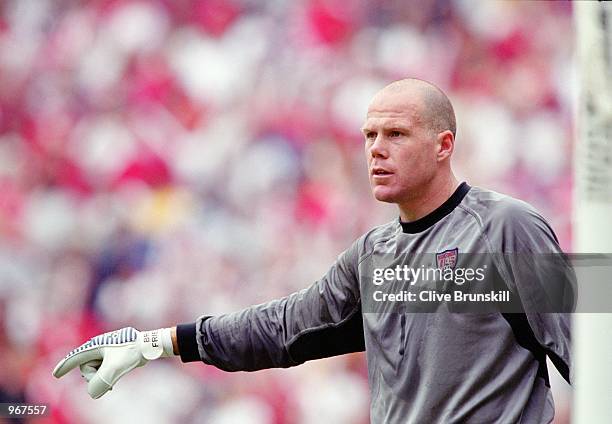
Creator: Clive Brunskill | Credit: Getty Images
Brad Friedel, who started all five U.S. matches at the 2002 World Cup and made one start in 1998, earned a place on three USMNT World Cup squads during his career.
First Cap (Age) – September 3, 1992 (21 years, 3 months, 16 days)
World Cup 2002 (Age) – (31 years, 0 months, 5 days)
Overall Stats heading into the World Cup
Matches Played – 76
Matches Started – 74
Minutes Played – 6,453
Wins – 25
Shutouts – 23
World Cup Qualifying Stats
Matches Played – 13
Matches Started – 13
Minutes Played – 1,125
Wins – 7
Shutouts – 4
Tim Howard – 2010 South Africa
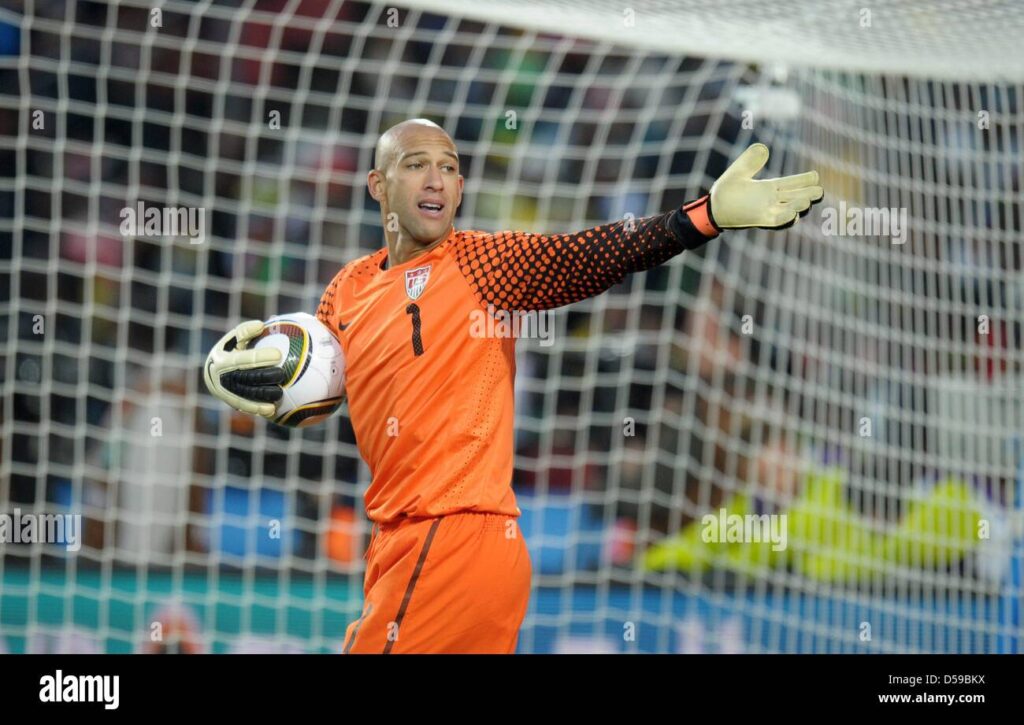
Creator: Ronald Wittek | Credit: Alamy
Tim Howard, the oldest first-time World Cup starter among this group, may also be the most accomplished. He appeared on three World Cup rosters, and likely would have made a fourth had the USMNT qualified in 2018.
First Cap (Age) – March 10, 2002 (23 years, 0 months, 4 days)
World Cup 2010 (Age) – (31 years, 3 months, 12 days)
Overall Stats heading into the World Cup
Matches Played – 51
Matches Started – 50
Minutes Played – 4,185
Wins – 31
Shutouts – 23
World Cup Qualifying Stats
Matches Played – 16
Matches Started – 16
Minutes Played – 1,440
Wins – 12
Shutouts – 8
Matt Turner – 2022 Qatar
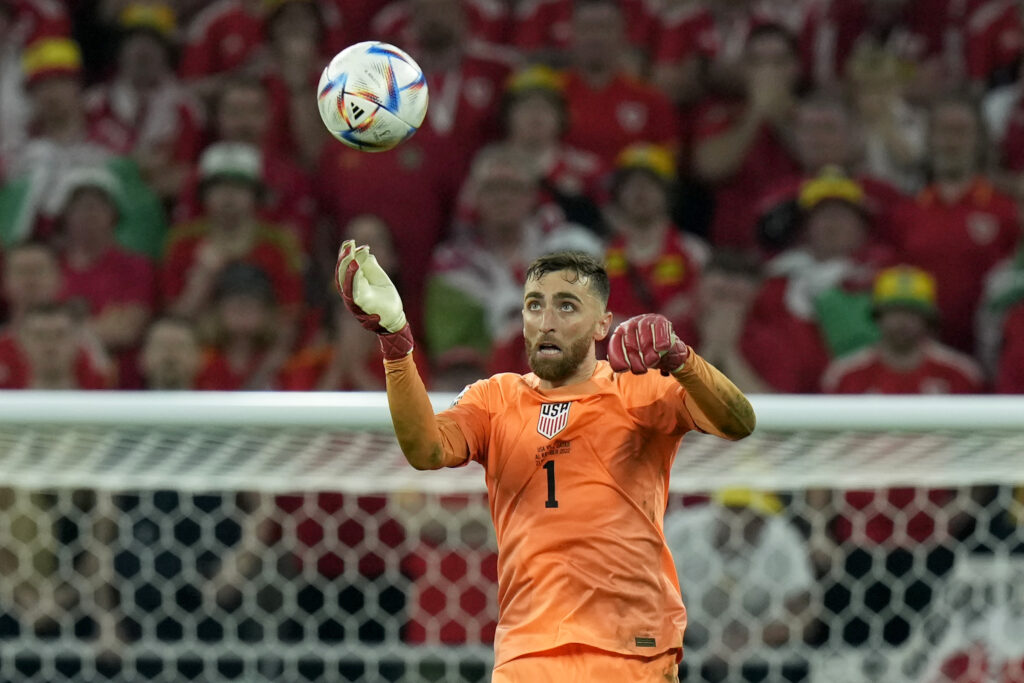
Creator: Francisco Seco | Credit: AP
Turner seized his opportunity when an unwell Zack Steffen was forced off the roster to start the World Cup qualifying, stepping in to start the first of eight World Cup qualifiers. His performances solidified his place as the USMNT’s starting goalkeeper for the 2022 World Cup.
First Cap (Age) – January 31, 2021 (26 years, 9 months, 3 days)
World Cup 2022 (Age) – (28 years, 4 months, 21 days)
Overall Stats heading into the World Cup
Matches Played – 20
Matches Started – 20
Minutes Played – 1,800
Wins – 14
Shutouts – 14
World Cup Qualifying Stats
Matches Played – 8
Matches Started – 8
Minutes Played – 720
Wins – 4
Shutouts – 4
Matt Freese
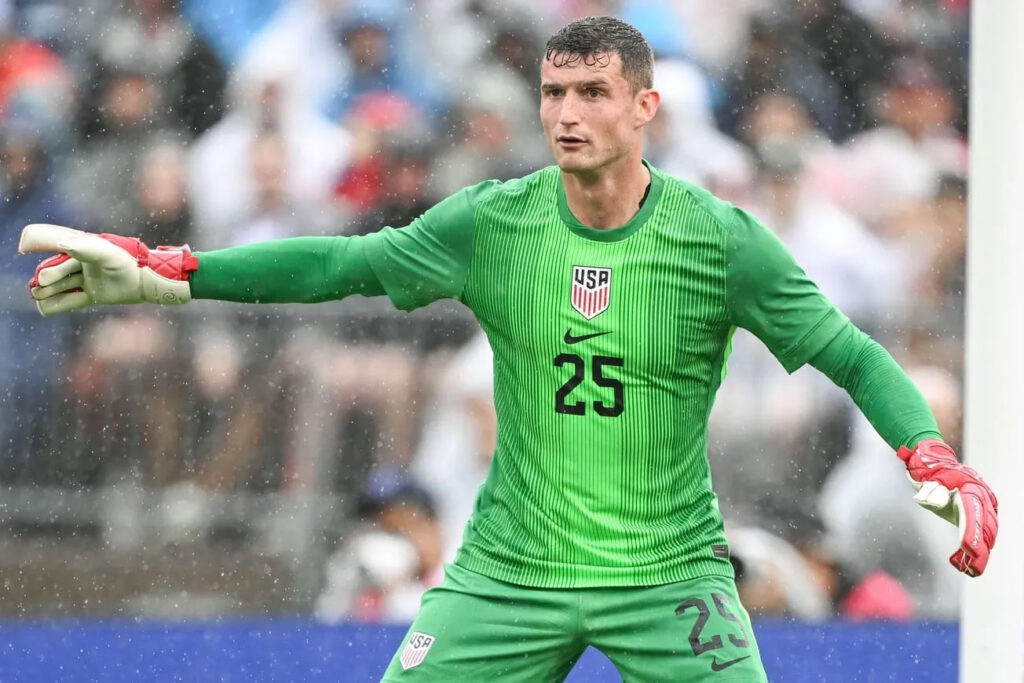
Courtesy USMNT
Matt Freese would have the shortest runway of any USMNT goalkeeper, from earning his first cap to potentially starting at a World Cup. He would also become the first U.S. keeper to start at a World Cup without having played a single World Cup qualifier.
First Cap (Age) – June 5, 2025 (26 years, 9 months, 3 days)
World Cup 2026 (Age) – (27 years, 9 months, 12 days)
Overall Stats heading into the World Cup
Matches Played – 13
Matches Started – 13
Minutes Played – 1,170
Wins – 7*
Shutouts – 3*
World Cup Qualifying Stats
Matches Played – n/a
Matches Started – n/a
Minutes Played – n/a
Wins – n/a
Shutouts – n/a
It’s clear the USMNT doesn’t have a true front-runner in goal even though Mauricio Pochettino currently leans toward Matt Freese, but as we’ve seen, things can change fast. Matt Turner, Patrick Schulte, Chris Brady, Roman Celentano, and Jonathan Klinsmann will all need to push hard to earn their place on the final roster.
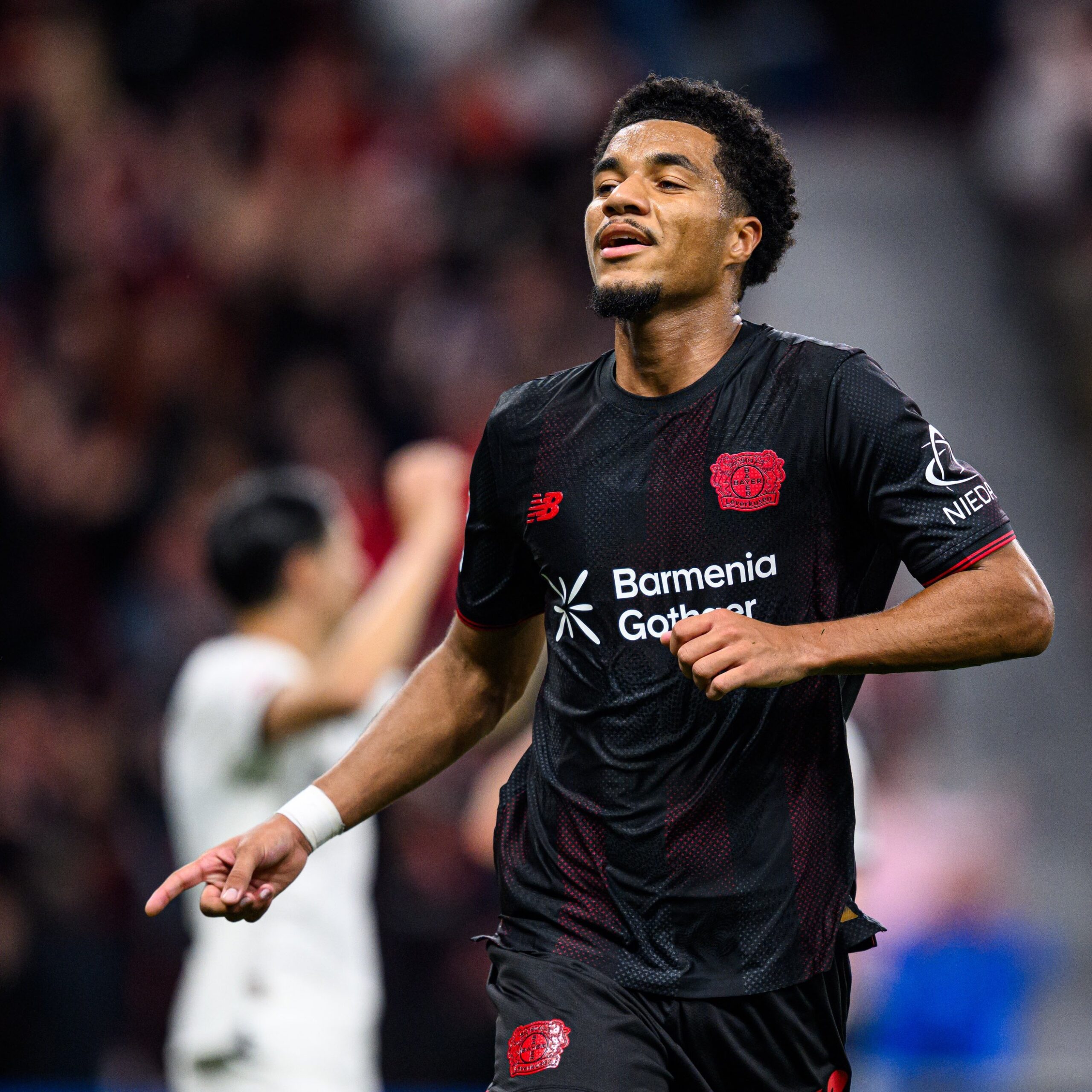
Last year, I wrote a stock-up/stock-down article covering ten Americans who either made a move to Europe or to the U.S. We are closing in on New Year’s and about 6 months until the World Cup (June 11th, 2026), giving us enough data to know if these transfers have been beneficial not just for the players’ club careers, but to make it onto the USMNT for the World Cup. As American soccer players, this season is the most important season of their international career. The players are making one last argument for them to be at a USMNT camp and be part of the team when the United States of America co-hosts the FIFA World Cup. So far, a lot of the European transfers have not gone so well, compared to the domestic transfers.
*All information is up to date as of December 1st, 2025.
Yunus Musah to Atalanta (loan)- Stocks Down
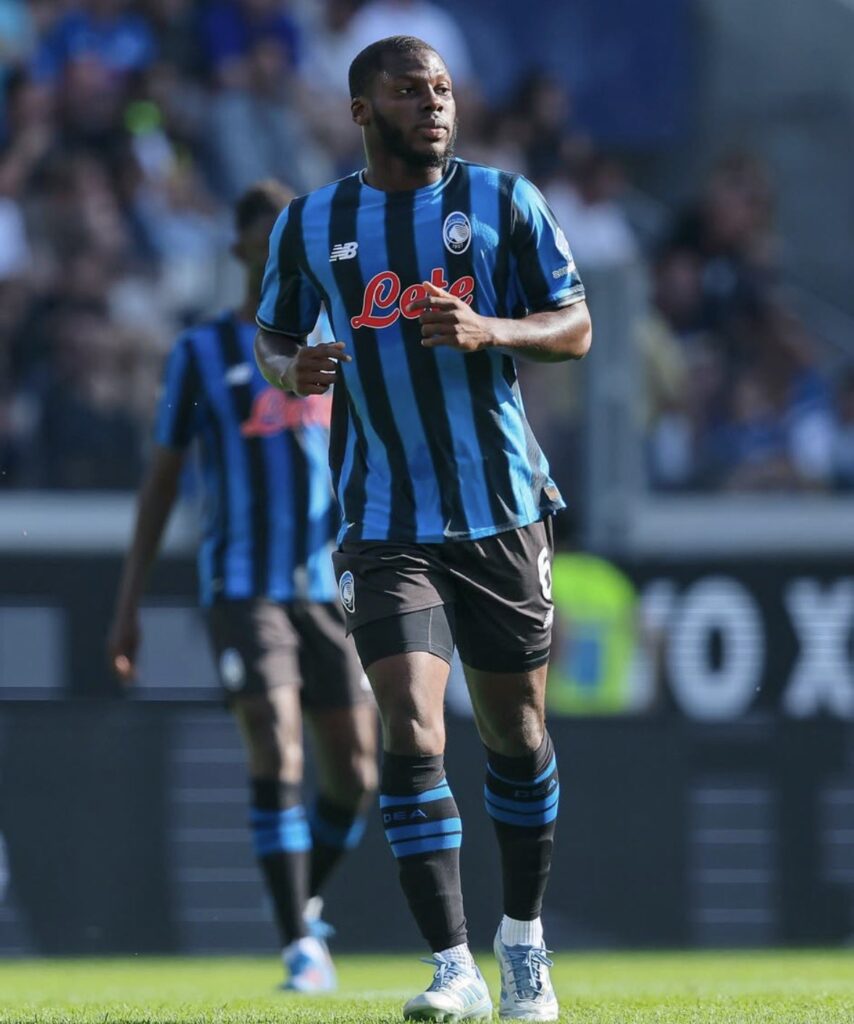
When Massimiliano Allegri took over AC Milan, he cleaned house. Twenty-four players were permanently transferred out of the club or sent on loan (some for positive reasons and others, not so much). Yunus Musah happened to be one of those 24 players. AC Milan sent Musah on loan to fellow Serie A club, Atalanta, with an option to buy that is worth $28 million. As things stand, it does not look like Atalanta will trigger their buy option at the end of the season. Musah has only one start and has appeared in 9 matches (a total of 203 minutes) while being available for a total of 16 matches since joining the Nerazzurri. When it comes to goal contributions, Musah has only one assist coming from the Champions League match against Club Brugge. When it comes to passing, Musah’s accuracy has not been bad (83.5%), but he is lacking in chances created with only 3.
He has never been known for scoring goals, but his total shots this half of the season are as low as 0.6. As for his defensive work, it has been average. He has only 2 interceptions, has lacked successful tackles (25% success rate at 1/4), and he has committed a penalty. The only positive is his ball recovery rate, which is at 16. Statistically, the only areas where he sees positive results have been in his dribbling (60% completion) and duels won (59.5%). From Atalanta’s standpoint, if he is offering little in the final third and in your defensive half, then what is the purpose of starting him? As for the USMNT, his poor form at his club has not gone unnoticed by Mauricio Pochettino. The last time Musah received a call-up to the USMNT was for the Gold Cup, which he turned down and that could be a contributing factor to why he has not been called up since. Others in the midfield, and at right wing, have been able to stake their claim onto the team. At this point, we will not be seeing Yunus Musah make it onto the 26-man team this coming summer.
Johnny Cardoso to Atlético Madrid- Stock Down
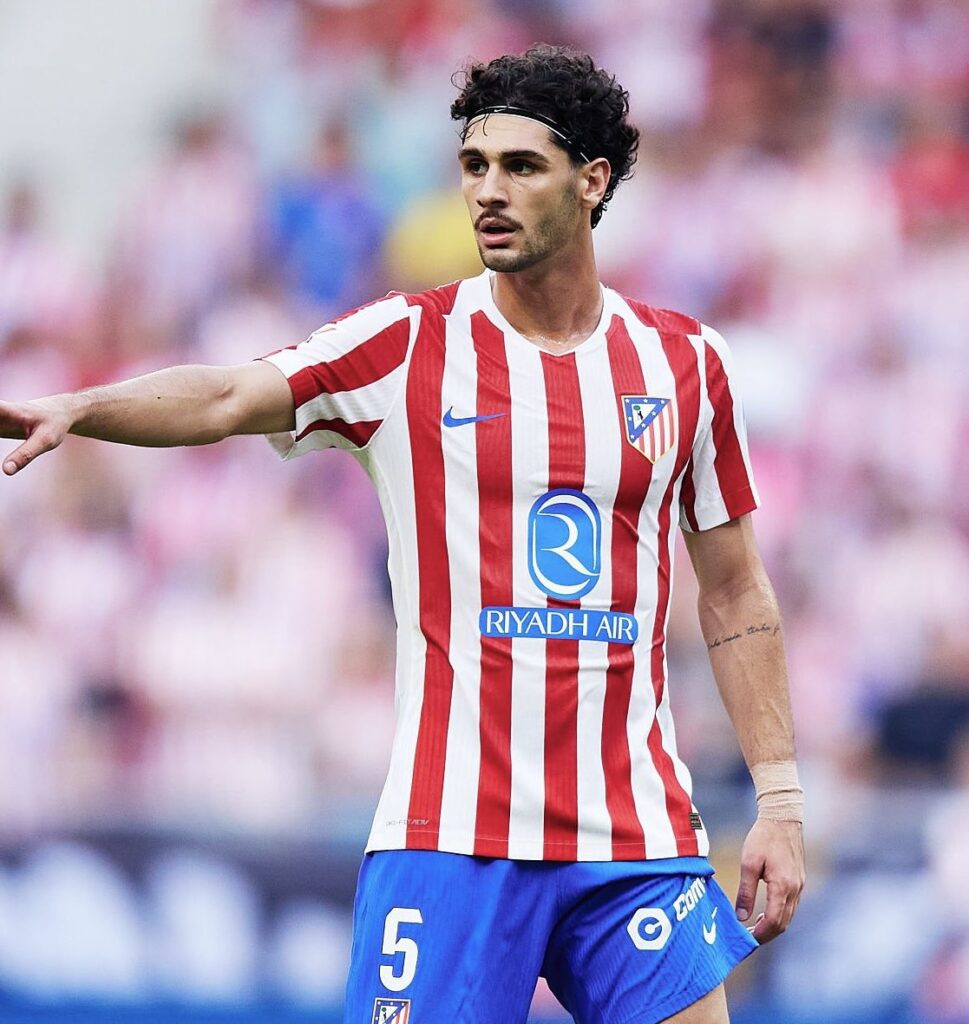
One of the biggest transfers this past window for an American, and one of the closest followed transfers in Spain, was Johnny Cardoso’s $35 million (according to Goal) move to Atlético Madrid on a 5-year deal. Johnny was coming off a solid season with Real Betis that showed a promising career in Europe. He collected 4 goals and one assist as a defensive midfielder. In just two months of being at Real Betis, Johnny won the LaLiga U23 Player of the Month for February 2024. Fast forward to today, due to his lack of opportunities with Atleti and his USMNT form, his hopes of being at the World Cup are fading.
During pre-season, he made his way onto the starting XI for Atleti starting in the first three matches of the season. Sadly, he picked up an ankle injury that led him to miss 9 matches. Since returning on September 13th, 2025, Johnny went 5 matches without receiving a single minute. Diego Simeone has opted to go with veteran player, Koke, to start alongside Pablo Barrios and Conor Gallagher as the substitution. He finally got his chance when Simeone named him on the Starting XI in their UCL match against Inter Milan on November 26th, 2025. For someone who had not played a single minute since August, Johnny had a good game in the 59 minutes he received. When we look at the stats from those four matches, there were positives. His pass accuracy sits at 77% with 62% total duels won. Johnny also completed 67% of his dribbles, had 4 interceptions, 2.65 tackles per game, 9 clearances, and 9 balls recovered. Obviously, stats alone will not keep you on the pitch and the performances of the other midfielders as of late have made it difficult for Johnny.
Atleti fans on social media are happy with his performances, believe he should be a starter, and believe he is an important player to the team. Time is running out for him at the international level though with the final USMNT friendly camp coming up in March. He must make an argument for himself to get into that camp to get one last shot at the World Cup. If Johnny builds on his performance from the Inter Milan match, he could see himself in that final camp.
Paxten Aaronson to Colorado Rapids- Club: Stock Down
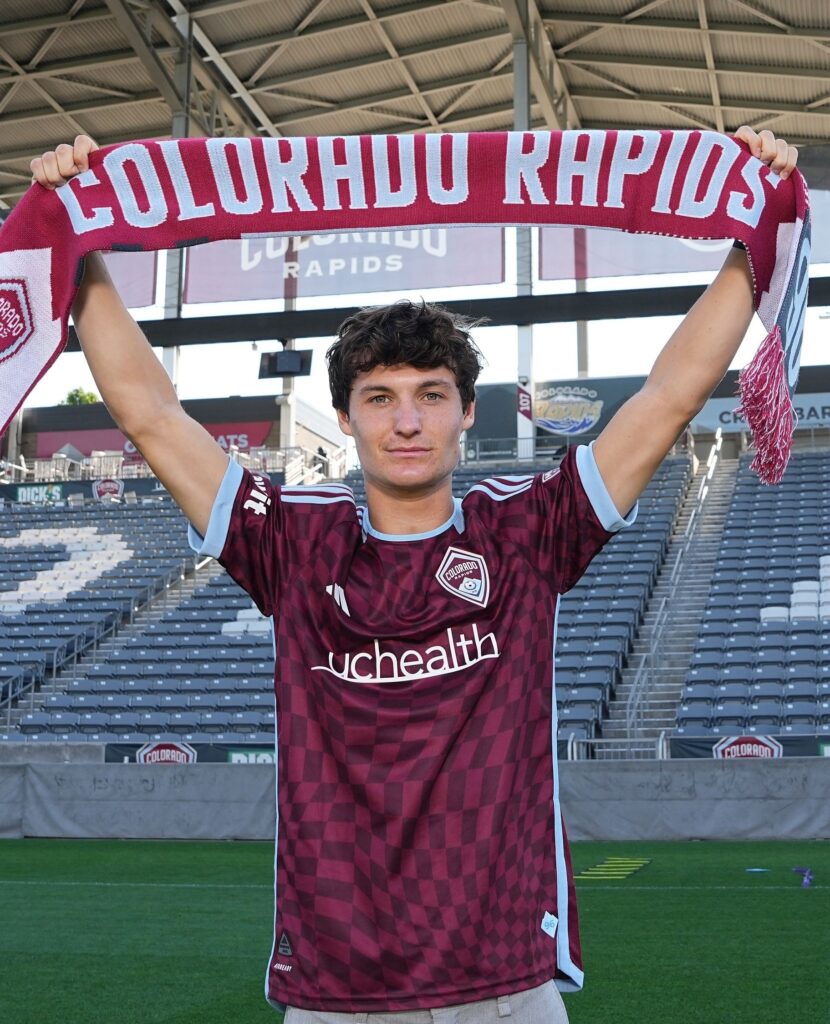
This will be seen as controversial by many MLS fans, but Paxten receives a stock down mostly because the move has not improved his chances of making it onto the USMNT and the impression that his career has regressed. Eintracht Frankfurt’s sporting director, Timmo Hardung, said, “With a view to the 2026 World Cup, which is taking place in his home country, among others, he made the request to take his next step at the Colorado Rapids.” During the Gold Cup, we saw 16 MLS players take part in the campaign. Paxten only received 58 minutes in total, when you include the friendly against Switzerland. It was the only camp he was called up to in 2025. We saw the likes of Diego Luna, Brian Gutierrez, Jack McGlynn, Luca de la Torre, and Sebastian Berhalter were either getting called up ahead of him and/or receiving more minutes than he was at the Gold Cup.
It set a precedent that no matter how well you perform in a top seven league, like the Eredivisie, the performance of those in the MLS will outweigh yours. In Paxten’s case, he had 8 goals and 4 assists in 30 starts for Utrecht, helping them finish 5th in the top Dutch league. His performance at Utrecht was enough for him to be part of Eintracht Frankfurt’s 2025/2026 campaign, who is competing in the UCL, part as stated by Hardung, Paxten submitted a transfer request to join Colorado Rapids. Yes, Paxten is getting regular minutes at Colorado instead of being a bench player, but he is coming back to MLS after just 2 ½ years in Europe. Despite receiving 571 minutes, Paxten only scored one goal and got 0 assists. It was not enough for Poch to give Paxten another chance with the USMNT, and the transfer had been all for nothing.
Malik Tillman to Bayer Leverkusen- Stock Up
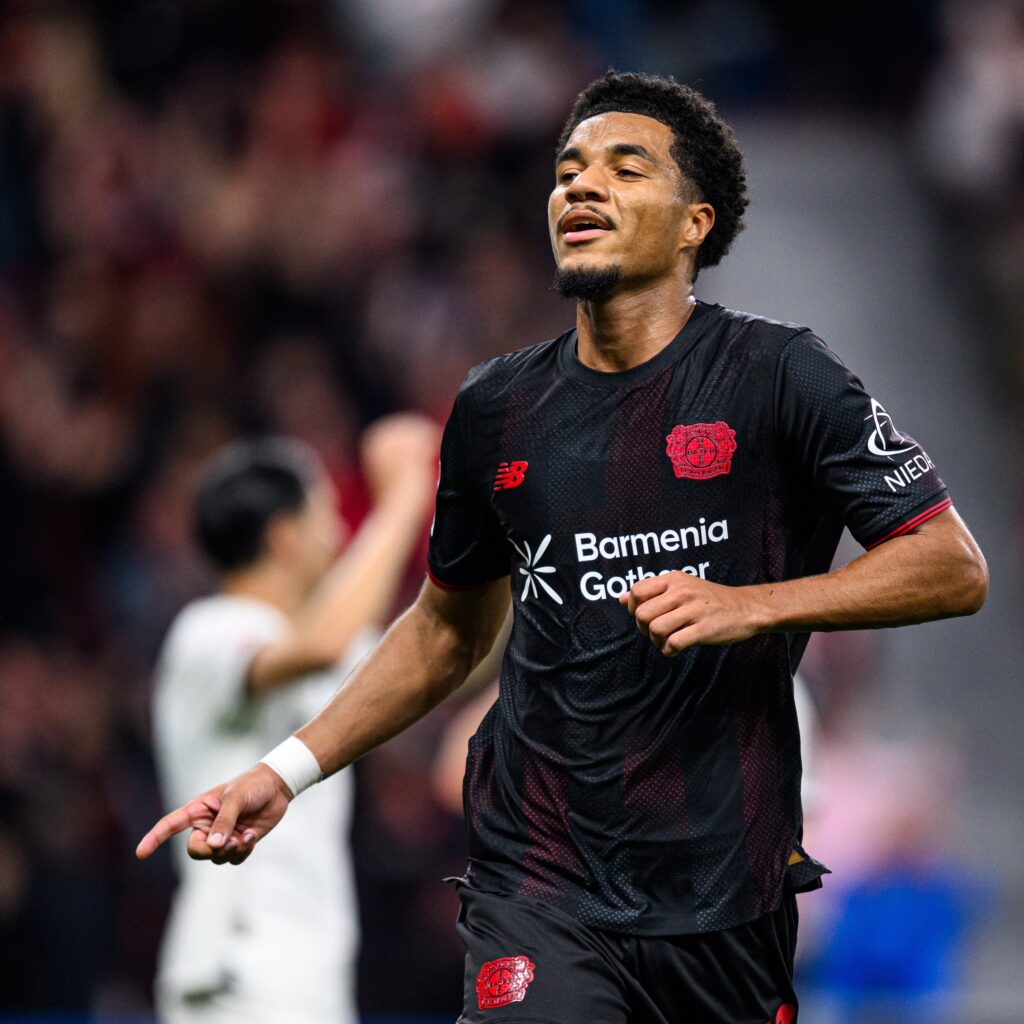
Three seasons ago (the 2022/2023 season), Malik Tillman left the Bundesliga after agreeing to a loan deal to Rangers F.C. from Bayern München. For the following season, Tillman went on loan to PSV Eindhoven, which became a permanent deal. This season, he is back in the Bundesliga, but this time with Bayer Leverkusen. In his debut match for Die Werkself, he scored a goal at the 35-minute mark. It has been a slow start for Tillman in the G/A department with only 3 goals in 12 matches, but there are still many positives to this move that show he can make it in the Bundesliga. When available, Tillman started in 10 matches, 3 of which have been UCL matches, and a total of 815 minutes played. Right now, Tillman has 1.50 xG in the Bundesliga with 187 goals per minute.
He also has a goal conversion of 25% to add on top of that. Outside of scoring, his pass accuracy is at 85%, but he has 0 assists and only 6 chances created. Defensively, Tillman has intercepted the ball 8 times, recovered it 33 times, 3 blocked shots, and has a success rate of 79.9% (18/24) tackles. Additionally, he has won 50% of his duels. A major reason why Tillman gets a stock up is because of one reason, he is playing consistently at a high level. Diego Luna is in the MLS and towards the end struggled with his production (it also did not help when Tillman looked like the better 10 in the Gold Cup).
Paxten would not be a starter for Eintracht Frankfurt if he had stayed and he took a step backwards. Gio Reyna is in the Bundesliga as well and is one of our most talented players, but he only has 189 minutes for Mönchengladbach. Despite Tillman’s continued issue of performing consistently, the fact he is getting regular minutes at a top five league club and finally performing for the USMNT, has locked him in as the #1 CAM for the U.S. at the World Cup.
Damion Downs to Southampton- Stock Down
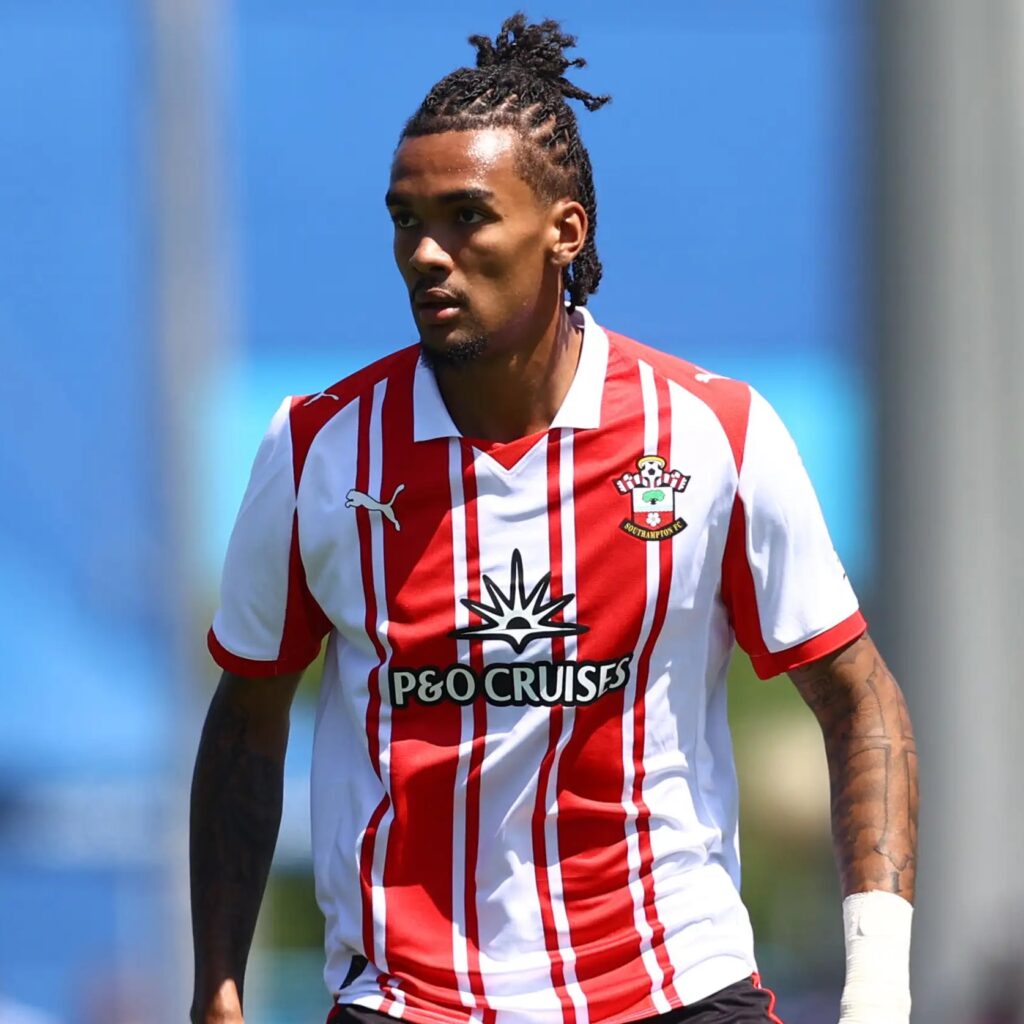
Damion Downs scored 2 goals in 179 minutes just shy of turning 20 years old. He followed this up with 10 goals and 3 assists in his first full season in a professional league when FC Köln was relegated to the 2. Bundesliga. FC Köln won the league and with-it promotion back into the Bundesliga. Downs contribution to the campaign got him a move to English Championship club, Southampton. Anyone who understands English football and Southampton’s striker depth knew this was a risky move. Prior to Downs joining, the club had Cameron Archer, Adam Armstrong, and Ross Stewart. So far, the transfer is going poorly and that is disappointing for a promising player. In 395 minutes, Downs has only one assist and gone 2 matches as an unused substitute. To make matters worse, he has only been on the matchday team sheet 16 times out of the possible 21 matches (Downs missed one match due to illness).
This move was not only important for Downs’ domestic career, but also his international career. During the 2024 Paris Olympics, Downs tried out for the U.S. Olympic team, but Marko Mitrović cut Downs from the team just before the Games. This led him to join Germany’s U20 to take part in their U20 Elite League campaign. It took Pochettino to give him an opportunity at the 2025 Gold Cup for Downs to rejoin the U.S. The goal for Downs would be to take that third striker spot with the USMNT this coming World Cup. Looking at his club form, that will not happen.
If you are looking for any positives, there are two. One, Downs is only 21 years old, so there is still plenty of time to recover his domestic career. Second, Downs is not the only striker at Southampton that has been struggling. Ross Stewart and Cameron Archer only have 2 goals, and one assist each this season. There is still the second half of the season to recover to possibly slide into the 2026 World Cup roster. If not, there is still the 2030 World Cup, which he will be 26 years old.
Patrick Agyemang to Derby County- Stock Down
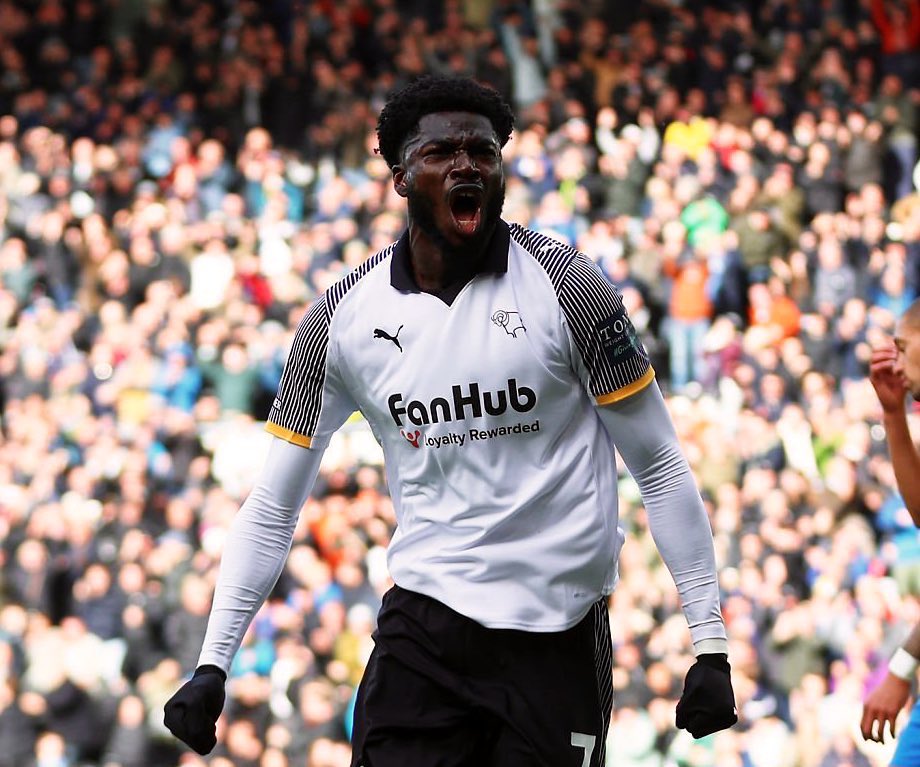
When the Gold Cup campaign began, Patrick Agyemang started all but one match, when you included the two friendly matches. Prior to the Gold Cup, Agyemang was part of ‘Camp Cupcake’ and the Nations League finals in March. In the three camps, he scored five goals. Many fans and pundits were calling him to be a lock for the USMNT and that appeared to be certain after the Gold Cup, but that is where it ended for him. For the September camp, Folarin Balogun, Josh Sargent, and Damion Downs were selected over Agyemang. Hope returned when he was called in for the October camp, but he did not receive a single minute in the two matches.
Then came the November camp where he did not get the call from Pochettino. What could have happened that led him to fall out of favor with Pochettino? There are two reasons: Balogun and Pepi have returned from injury, and Agyemang has been in poor form at Derby County. In 11 starts and 953 minutes played, Agyemang has only 3 goals and 3 assists. In comparison, fellow American and Championship player, Haji Wright has 9 goals and 2 assists in 14 starts. To make matters worse, Agyemang has 318 goals per minute, and his goal conversion is a meager 11%. His passing has not been the greatest sitting at 69% accuracy, but Agyemang is just short of creating a chance per game at 0.9 (13 chances created). Besides having a poor goal conversion rate, his ball retention is also poor. Agyemang has lost 66% of his duels and losses possession 11.2 per game.
Before his move to Derby County, Agyemang scored 8 goals in the current MLS season and finished last season with 10 goals. The move has not only been a stock down for him domestically, but also internationally. Agyemang needs to find his form quickly or he will not be part of the USMNT again this World Cup cycle.
Benjamin Cremaschi to Parma (loan)- Stock Down
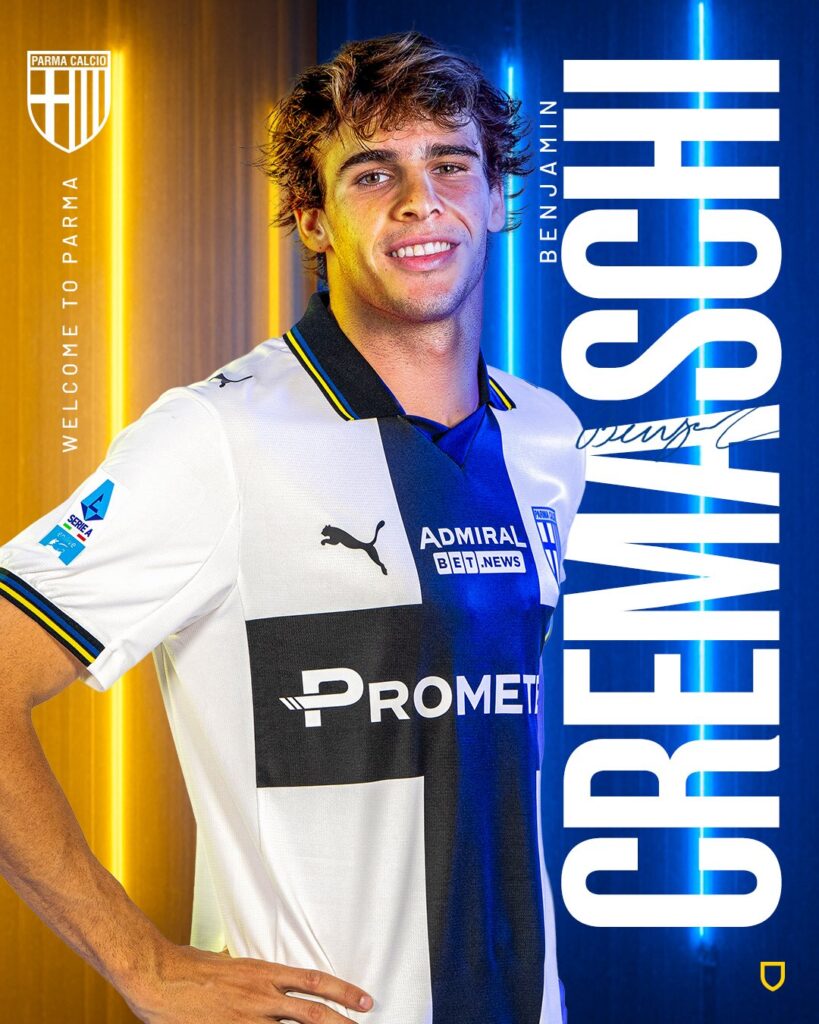
Benjamin Cremaschi was someone whose chances of making it to the World Cup were slim, but he took part in ‘Camp Cupcake’ and performed well in the U20 World Cup. Prior to the U20 World Cup, Cremaschi had yet to make his debut since joining Parma on loan at the end of the summer transfer window. After winning the golden boot at the U20 World Cup, Cremaschi got his debut, but he has only clocked in 14 minutes in 2 matches. On seven different occasions, Cremaschi has been an unused substitution by Carlos Cuesta. The loan deal includes a buy-option and so far, it does not look like Parma will exercise that option. Cremaschi needs to find his way on to the pitch to convince Parma to make the move permanent.
The move at first gave some hope that he could get back into the USMNT picture and his showing at the U20 World Cup reinforced that. Since he has not even reached 25 minutes in Serie A with barely any data and footage to go on, his chances at the World Cup are even less now. Cremaschi would have to try again during the 2030 World Cup cycle.
Timothy Weah to Marseille (loan)- Stock Up
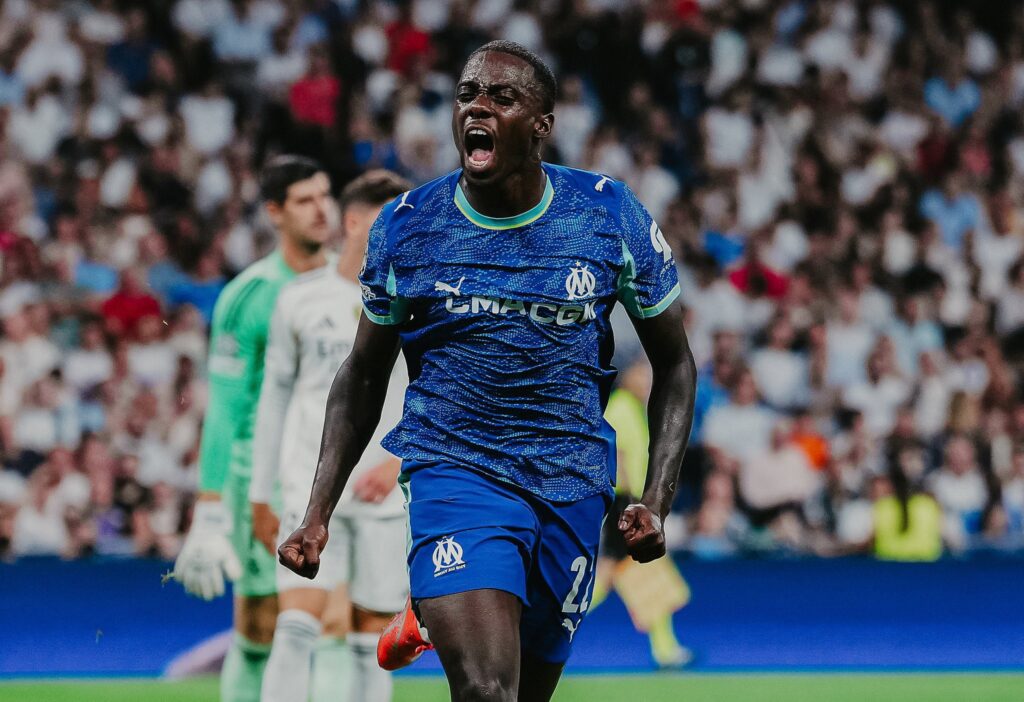
Even though Tim Weah set a personal record for goal contribution with 10 goals and assists, he only started in 24 matches. Now, he is on loan where his dad spent a spell at Marseille. The loan has worked out for Weah so far, starting in 12 of the 15 matches he has appeared in. Currently, Weah has 2 goals and 2 assists with a goal conversion of 23%. His passing accuracy is at 87% with 15 chances created. Weah’s defense has been decent with 59.1% tackles completed, 35 recoveries, and 15 clearances. The one stat that has been negative for him is his duels at 50%, which is not too bad. The move back to Ligue 1 has been beneficial to not just his playing time, but more fitting to his playing style.
Weah is still in the USMNT picture and there should be no doubt that he will be at the World Cup. The question is, at what position? Weah has been playing all along the right side for Marseille, mostly at RB. Now that the USMNT is using a 3-4-2-1, Weah is fighting with Sergiño Dest for that starting RWB spot. If Pochettino does not plan to have Weah at RWB, does he move to CAM, where the depth is deep, or to striker? It is likely that Weah would be placed at RWB, but I do not think it is a matter of being #1 or #2. Depending on who our opponent in the World Cup is would decide if Poch starts Weah or Dest.
Kristoffer Lund to 1. FC Köln (loan)- Stock Up
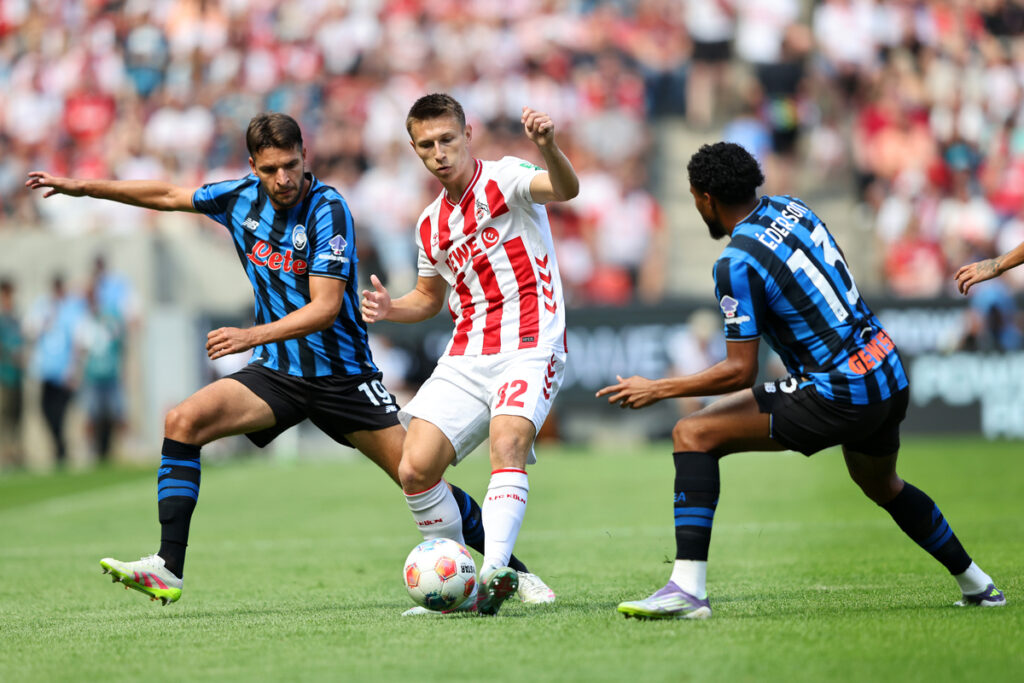
A surprise transfer over the summer came from Kris Lund when he joined FC Köln in the Bundesliga on loan. Lund started off strong when he joined Palermo in Serie B back in 2023/2024, but last season he struggled with his form and getting starts (he only started 24 of the 35 matches he appeared in). That is why when the report broke out that newly promoted Bundesliga club, FC Köln, signed him on loan with a buy-option, it took U.S. fans by surprise. It has been up and down for Lund since joining Köln, but the club is midtable and will likely avoid relegation. Lund has also been starting consistently for Die Geißböcke with 10 starts out of 14 matches. Due to him getting consistent starts for a midtable Bundesliga club, many USMNT fans have suggested that Pochettino should give Lund another chance.
That has not happened, either because there is something about his club performance that has not impressed Poch to call him up over John Tolkin and Max Arfsten, or Lund’s performance back in the October 2024 camp that left a bad impression. Looking at his stats, Lund has not really done anything offensively and that could be a reason why he has not gotten another look by Poch. His xG is at a low of .20 while his xA sits at .41. Lund did get his first Bundesliga assist recently in Köln’s match against Werder Bremen. Lund’s passing has not been too bad with an accuracy of 72.5%, but his chances created are only at 6. Defensively, he is doing better where he has 10 interceptions, 95.8% (9/12) completed tackles, 31 recoveries, and 36 clearances. A major negative in his records is that he has committed two penalties.
The loan has been good for his domestic career and caught the attention of USMNT fans again. If we are giving a midtable 2. Bundesliga player call-ups, then a midtable Bundesliga player should get another opportunity. It is doubtful that Lund will be at the March camp and at the World Cup. The LWB position will likely be covered by Antonee Robinson and Arfsten, one who has been reliable for us since the 2022 cycle and the other who has a 6 G/A this year. He is 23 years old, so there is always the 2030 World Cup. Lund simply needs to end the season on a positive note, make his move to Köln permanent, and then perform consistently throughout the next cycle.
Honorable Mention
George Campbell to West Brom Albion- Stock Up
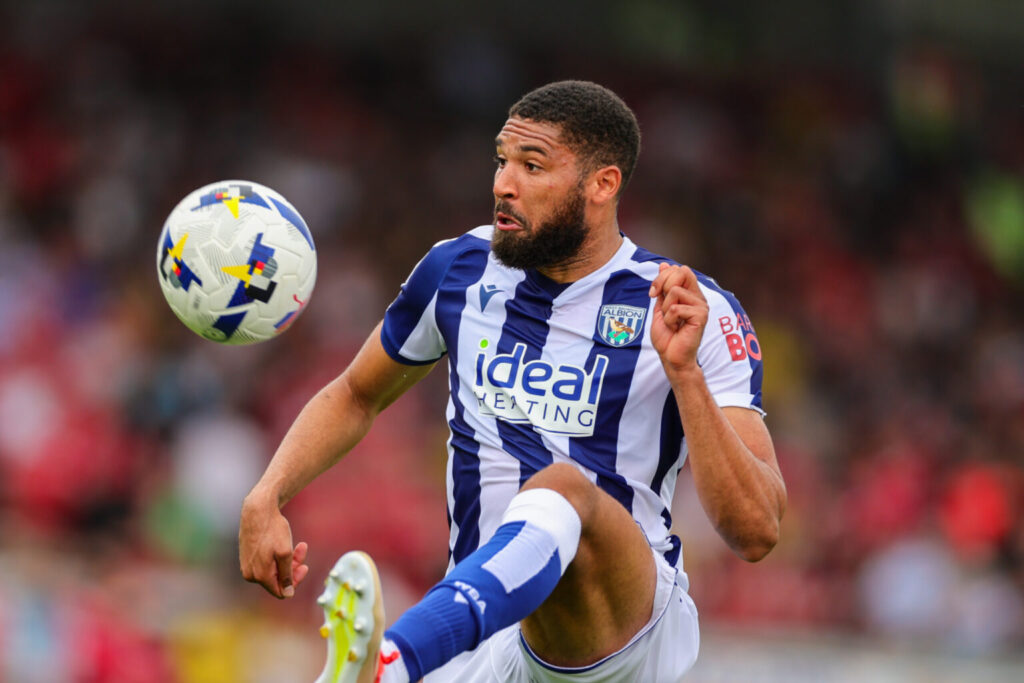
Another surprise transfer was when George Campbell left Montréal for English Championship side, West Brom. So far, it has not gone too badly for him. While healthy, he has started in 13 matches with a total of 1,259 minutes. Campbell has collected 2 clean sheets with 9 interceptions, 81.94% (21/30) successful tackles, 47 recoveries, 73 clearances, and 8 blocked shots. The only major negative defensive stat Campbell has is committing one error that led to a shot. He has been successful with his passes by completing 89% of them, but Campbell’s duels have been average, winning 50% of all duels.
Like Lund, Campbell recently got his first English Championship assist in West Brom’s clash against Swansea off the bench. Due to the USMNT’s current lack of quality CBs, there were fans suggesting that Pochettino call up Campbell to give him a shot. The thing is though, Campbell has mostly played at RB, a position that is covered by Sergiño Dest, Alex Freeman, and Joe Scally. On the upside, Poch has moved to a back 3, which could give Campbell access to the USMNT. It is doubtful that he will get a chance at the March camp, but he is only 24 years old, and he is now in Europe where he can continue to develop. The 2030 World Cup is still a reality and that is why he gets a stock up.
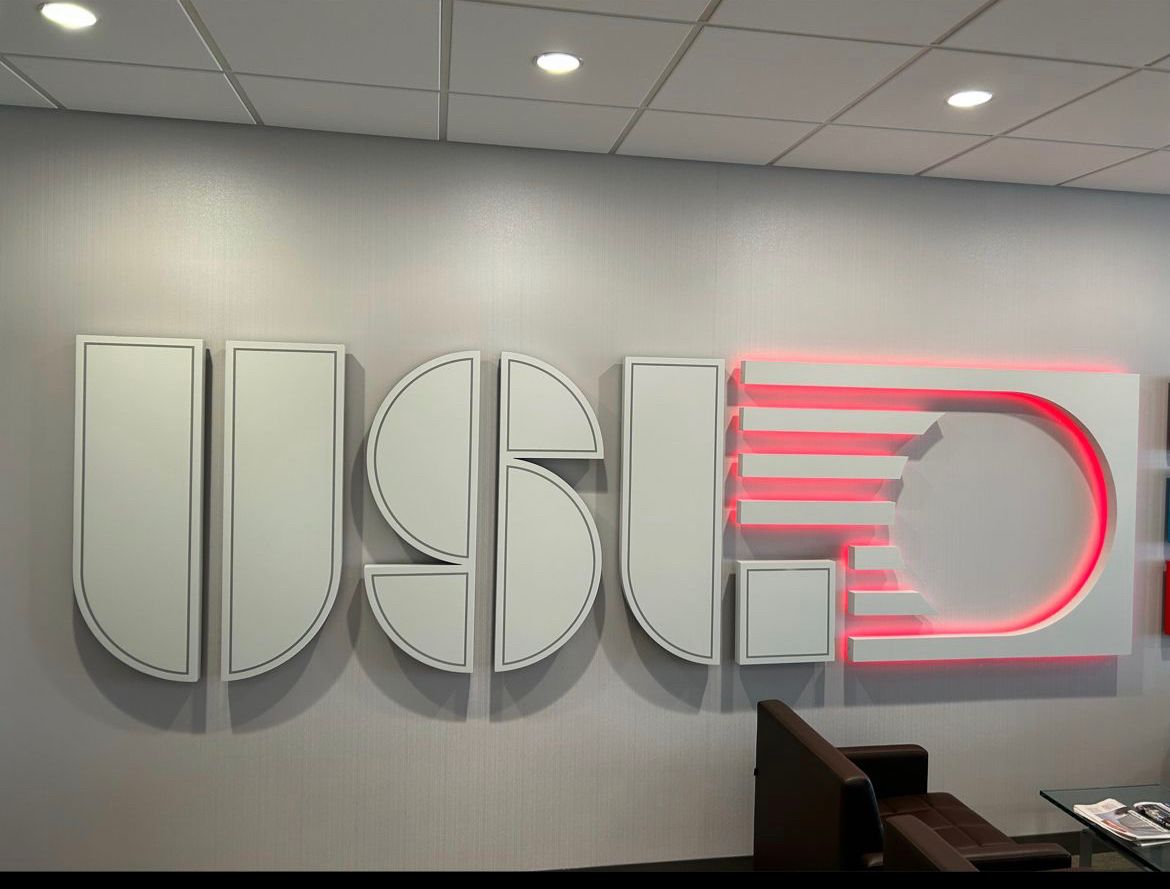
USL made national headlines when they announced on February 13th, 2025, their plans to launch a Division One league, followed by the announcement of promotion/relegation on March 19th for the new Division One league, the Championship, and League One. If sanctioned by US Soccer, USL Division One would be of equal status to MLS and compete for the best major soccer league in the U.S. The implementation of promotion/relegation in the USL would become the first in the U.S. and test the question asked for many years, “would pro/rel work in the U.S.” USL HQ informed the public that they planned to have the inaugural season of Division One during the 2027-2028 season with promotion/relegation beginning in 2028.
Until November 3rd, with the announcement of Tony Scholes being hired as the President of the Division One, only three teams have applied for membership to the inaugural season of Division one: Louisville City, North Carolina FC (who announced at the time of the Scholes news that they would fold until the launch of Division One), and Pittsburgh Riverhounds. There has been a rapid expansion of teams in the already existing leagues since the two announcements. Teams joining League One are: Fort Lauderdale FC (2026 debut), New York Cosmos (2026 debut), Port St. Lucie SC (2027 debut), Sporting Cascades FC (2026 debut), and Rodeo FC (2027 debut). Fort Wayne FC and Sarasota Paradise would also be joining League One from League Two (2026 for both teams). For the Championship, Reno, NV will once again have a team planned for a 2027 debut. Along with those teams, USL is actively working to expand to other markets. The markets and partners they are looking at are Brevard County, FL (Space Coast Pro Soccer), Riverside, CA (Riverside Pro Soccer), Brownsville, TX (City of Brownsville), Winter Garden, FL (Central FL Pro Soccer), Santa Rosa, CA (City of Santa Rosa), and Pensacola, FL (City of Pensacola).
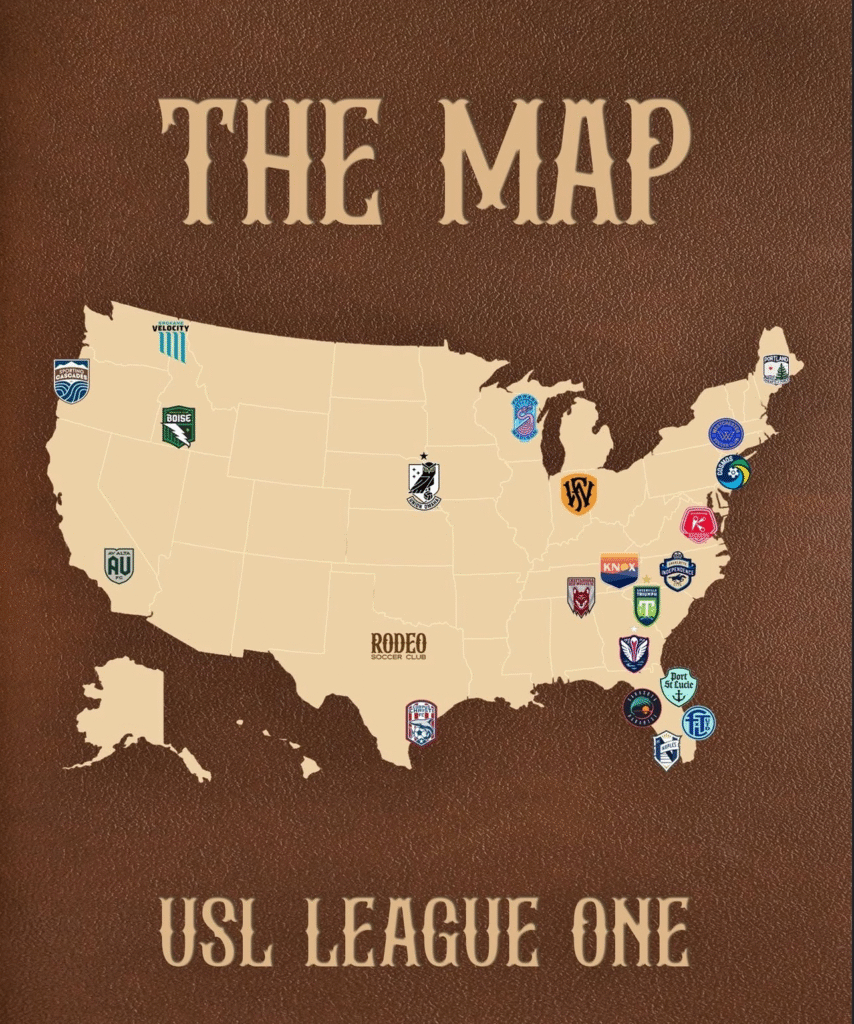
Along with these recently announced teams and partnerships, USL has teams joining the organization just in time for promotion/relegation that were announced prior to the February and March news. Starting with League One, these teams include: Corpus Christi FC (2026 debut) and Athletic Club Boise (2026 debut). As for the Championship, they will be adding Brooklyn FC (2026 debut), Sporting Jax (2026 debut), Atlético Dallas (2027 debut), Milwaukee Pro Soccer (TBD), USL Pro Iowa (TBD), Buffalo Pro Soccer (TBD), and Ozark United FC (2027 debut), while Santa Barbara Sky FC (2027 debut) would replace Memphis 901 FC.
Other than that, news on the Division One and promotion/relegation had been quiet until USL snatched Tony Scholes from the English Premier League. Tony Scholes will be the President of Division and help with the implementation of promotion/relegation. Scholes served as the chief football officer of the EPL and will join USL at the end of the EPL season. As of November 15, 2025, USL Division One has not been sanctioned as a division one league by US Soccer. The hiring of Scholes indicates that they are confident this new league will get approved or they have already been told it will, behind closed doors. The fact that we have not heard news on what the promotion/relegation format would be, and Scholes task would be to help implement it could mean that USL has not come to a decision on one. Since we do not have any ideas on what the format could be, I want to provide a possible option that they could go with.
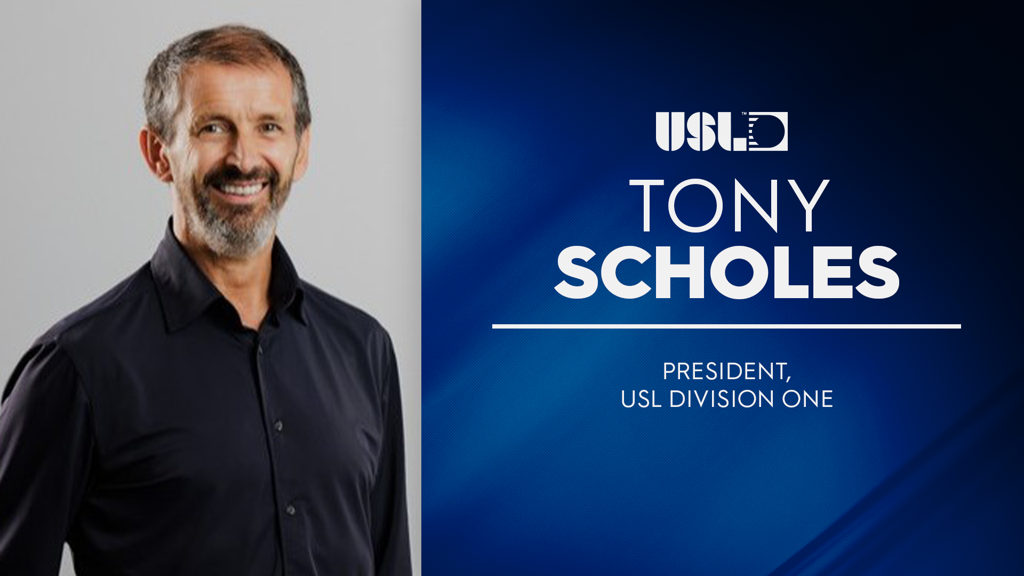
One of the biggest questions people have had since the USL announced promotion/relegation was how they would tie it to the playoffs. There is an option they could do, but it would result in only having one playoff. USL would have a playoff for Division One, but they would eliminate the concept for the Championship and League One. It might not be the most popular idea here in the U.S., but the main goal for the lower leagues is to get promoted, not to win a trophy. They would retain the league title for those two leagues with the winner being the team with the most points at the end of the season, just like how it is in the European leagues. The purpose is to create fairness for the top performing team(s) in the two lower leagues and reduce confusion. If there is a need for a playoff format, they could adopt the format the Bundesliga uses where the 16th best team in the first division and the 3rd best in the second division face-off in a two-leg match to see who would be in the first division the following season. The other option is the Championship concept, where the teams who finished 3rd through 6th in the table compete in a promotion playoff. The semi-finals are two-leg matches while the final is a single-leg match. The winner is promoted to the EPL. The execution of promotion/relegation must be done perfectly to retain fans, gain fans, prevent confusion, and be entertaining.
USL already has a division one league with their women’s Super League, who is competing against the NWSL. Currently, the S League has only nine teams (Brooklyn FC, Carolina Ascent FC, Dallas Trinity FC, DC Power FC, Ft. Lauderdale United FC, Lexington FC, Spokane Zephyr FC, Sporting Jax, and Tampa Bay Sun FC) to the NSWL’s 14 teams (3 teams in the works). The Super League will be adding an additional nine teams (Athletic Club Boise, New York Cosmos, Ozark United FC, Buffalo Pro Soccer, Chattanooga Red Wolves FC, Forward Madison FC, Indy Eleven, Oakland Soul SC, and USL Palm Beach) with all but three to have their inaugural season to be determined. What makes the S League unique from the rest of the soccer leagues in the U.S. is that they use a fall-summer schedule. Competing against a top five women’s league in the world is a tall ask, but it shows the ambitions of USL.
They are also willing to take risks by voting to pass promotion/relegation for the men’s league and have a fall-summer schedule for the S League. If the S League schedule format proves successful, it stands to reason that they would move the men’s leagues to the same schedule. It would also avoid the organization from having to fight MLS for viewership when the leagues are in play, especially when they launch a direct rival and are at their most ambitious point in their history. The same can be done for the S League if promotion/relegation is successful for the men. USL can start establishing lower women’s leagues and introduce promotion/relegation to the women’s game here in the U.S.
Many would say USL still stands no chance at competing against MLS, even with promotion/relegation and having a division one league. That is the case when you look at the quality of the players is finance, but that is the reason why the USL made these decisions based on the reports prior to the announcements and afterwards. Promotion/relegation and the introduction of a division one league could see an increase in investors. We are already seeing that with the likes of Gio Reyna joining Fort Lauderdale as an investor, BellTower Partners investing into USL, Sofia Huerta and Kasey Keller joining the Athletic Club Boise ownership group, and the Chickasaw Nation becoming an investor of the OKC for Soccer just this year alone. Then there is the expansion fee for MLS, MLS Next Pro, and the USL leagues. MLS charges an astounding $500 million! Yes, the money is used to construct a proper stadium, acquire players, etc., but at this point it will discourage many from purchasing a franchise license. MLS currently only has two leagues and one of them is advertised as a development league to prepare for MLS. The expansion fee for an independent team to join MLS Next Pro is unknown, but Sports Business Journal reported in 2024 that it is significantly cheaper than the USL Championship. The fee to join the USL Championship is $20 million while League One is only $5 million. These two fees are significantly lower than MLS and that will be more appealing to potential owners, but unlike the MLS fee, it is not enough for a stadium, training grounds, and players. As for what the fee is to join USL Division One, that is unknown at the moment.
I highly recommend reading the ESPN article by Jeff Carlisle titled “Will USL’s Move to Pro-Rel Change U.S. Soccer, Threaten MLS?” In there, Carlisle discusses the reasons behind the decision and that it is mostly financial. For example, a USL spokesperson said they expect to see an increase in commercial revenue by 15% to 30% due to promotion/relegation. Also, the former owner of San Diego Loyal lost $40 million in 4 seasons. As for the reaction from MLS, we have not heard one yet. The only possible reaction we have seen from them is what the former MLS Next Pro president, Charles Altchek, told to Backheeled back on March 6th, 2025. In the interview, he told them they aim to have 40 to 50 teams and a possible second league with one of the MLS Next Pro leagues being a second division, putting it in direct competition with USL Championship. The biggest question is, whichever league that is, can compete for fans? Due to the Apple TV deal, we currently do not have the ratings of MLS Next Pro. The closest idea we have is the attendance, which is 5,580 for USL Championship per match to MLS Next Pro’s 3,361, according to Transfermarkt. Unlike the attendance, the viewership for USLC is much higher where the season premiere match had 453,000 viewers. MLS Next Pro’s massive expansion plan announcement date was either a coincidence, or MLS got word USL’s promotion/relegation implementation with the division one news, and this was their response. I will let you come to your own decision.
It seems, as of right now, it appears MLS will sit back and wait to see how the USL’s Division One and promotion/relegation will play. Division One and promotion/relegation will either be successful for USL and lead them to the financial success they are hoping for or lead to the possible collapse of USL. American sports fans are not the only ones keeping their eyes on USL now, but the rest of the soccer world is after their two massive news. The coming years are going to be exciting times for American soccer!
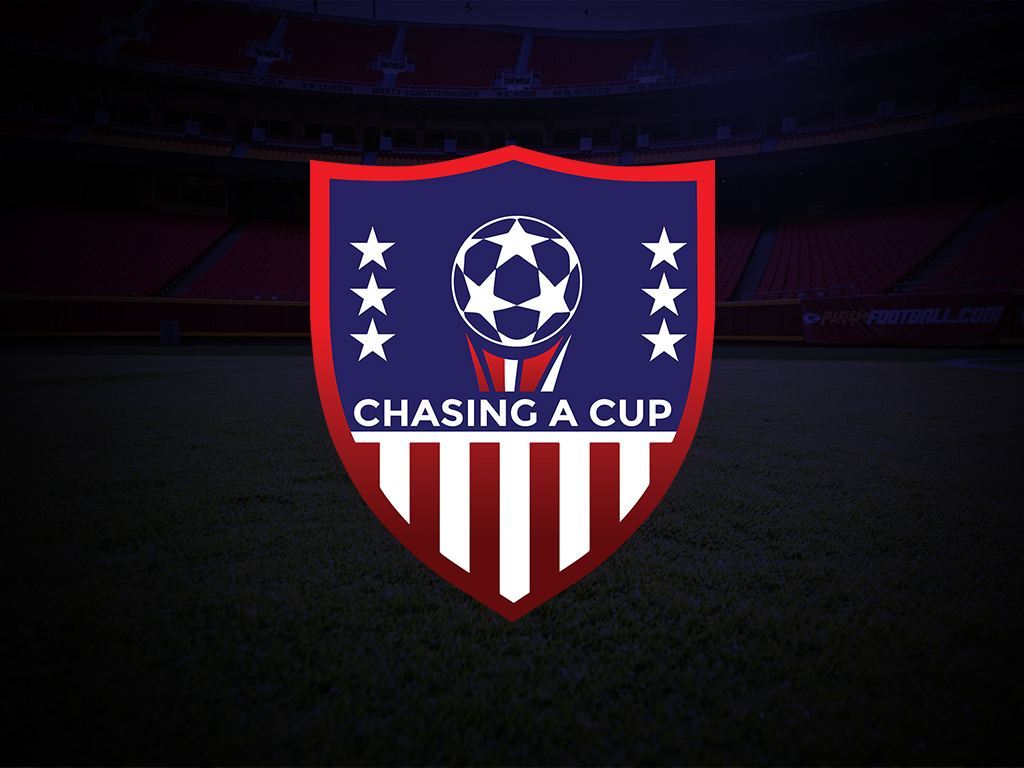

Breaking the Mold: Freese a Unique USMNT Goalkeeper

2025 Summer Transfer Window Review

USL’s American Soccer Dream

Trending
-

 Club News1 year ago
Club News1 year agoAmerican Transfers: Stock Up & Stock Down
-
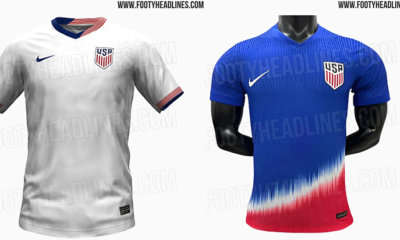
 USMNT2 years ago
USMNT2 years agoUSMNT Kits Come in Different Styles and Colors
-

 Club News6 years ago
Club News6 years agoJulian Vincente Araujo
-
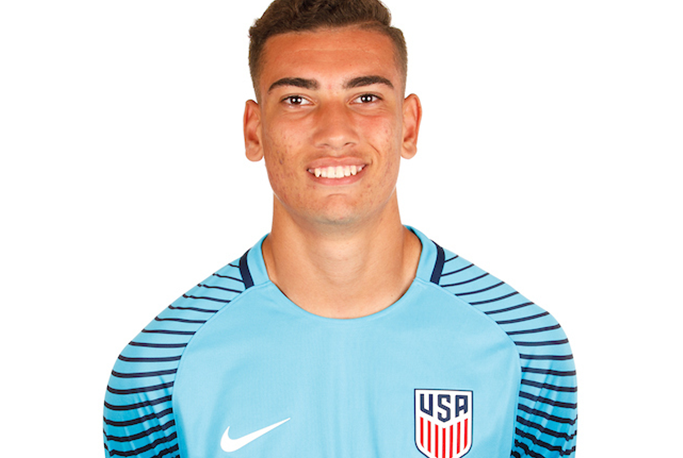
 Club News5 years ago
Club News5 years agoCJ dos Santos, Benfica
-

 USMNT5 years ago
USMNT5 years agoA Hidden Gem: Barça Residency Academy
-
USMNT3 years ago
World Cup Format History
-
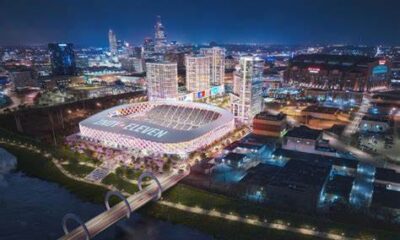
 USMNT2 years ago
USMNT2 years agoIs the MLS Specifically Targeting Expansion to USL Cities?
-
USMNT6 years ago
MLS Quota

